Lately, I've been seeing a few Javanese architecture around and I reckon to contribute a bit to this style of architecture. So, in this post, I talk about my own misconception about Javanese classic architecture, along with general Javanese architecture and the view of the place I was staying at.

First, a Javanese architecture itself is quite broad, as Java comprises a few provinces and shares quite few differences. However, there are some general architecture rules and even the materials that are made from wood or dominated by wood. There's an exception within western java, where bamboo for vernacular houses seem to be more common than in central and eastern java. The roof construction is also different depending on the region as well. In addition to that, in Java itself, the names of these houses are different and share different philosophies depending on the region. For example, in central java & yogyakarta, they have a vernacular house called "joglo" which actually is a marker for aristocats families in the past. Yet these days, these types of houses can be found anywhere including houses or even a cafe.
Last week, my family and I stayed at a resort called " Jawa Dwipa heritage resort which is located in tawangmangu karanganyar central java. During one interview, the manager said that the place is a " classical javanese" resort with ancient Majapahit kingdom atmosphere.
My mom was also the one who eventually convinced me to stay here because not only I would love the architecture, especially the man-made temple but she was just in awe of the pool. At that moment, when I listened to that interview and checking the reviews, I had this question in my mind, what's an actual classic Javanese architecture?
Before doing all the research, like many others, I would expect a classic javanese architecture something of central java & yogyakarta with a vernacular type of house with all wood dominated interior and exterior. Instead, after reading numerous papers, I was mind-blown by even my own misunderstanding when we heard about classic and also classic Javanese architecture.
So what's classic javanese architecture about ?
After some research, I found out that the term classic that people throw around is actually much different than the actual classics. In a paper examining a joglo through tectonics approach, it is even argued that joglo is a hybrid architecture between a classic javanese architecture with its stereotomic architecture and traditional javanese architecture with its tectonic architecture. So even from that, the deduction would be that a classic javanese architecture would be a stereotomic instead a typical understanding of a classic javanese architecture out there that they are made with just putting the materials together instead carving it out. Moreover, this Indonesian wikipedia on classical architecture also stated our common misconception about the "classic" architecture. As it said, it's not entirely wrong to refer to places made of wood and even stones when we hear about classics but there's much more to it.
Yet in a modern sense, classic javanese architecture houses often associated with "joglo" along with wood dominated exterior and interior. Although certainly, there's definitely some stones around and still incorporating some nature. There's also this article Exploration of Classic Javanese Architecture that basically tries to use the classic javanese architecture in a modern sense. The article throws around some "classic" words even when mentioning how the fences and the stones that made it look "classic" without first telling us what constitutes "classic". Maybe after all, that's an exploration and not in a rigid sense of classic. Now, in my conclusion, there's no exact definition nor characterization that refers to this exact type of "classic" but perhaps we can go back to the definition of classic itself, which one of it is traditional and enduring.
JAWA DWIPA HERITAGE RESORT AND HOTEL OVERVIEW
Now on to the place and its overview!
We arrived at the hotel around 9 PM and it was rather pitch dark. There was only one person attending the reception area who then showed us the way to the resort which was located behind the road. Only in the morning I found out that this reception/lobby is actually located on the 3rd floor of the building.
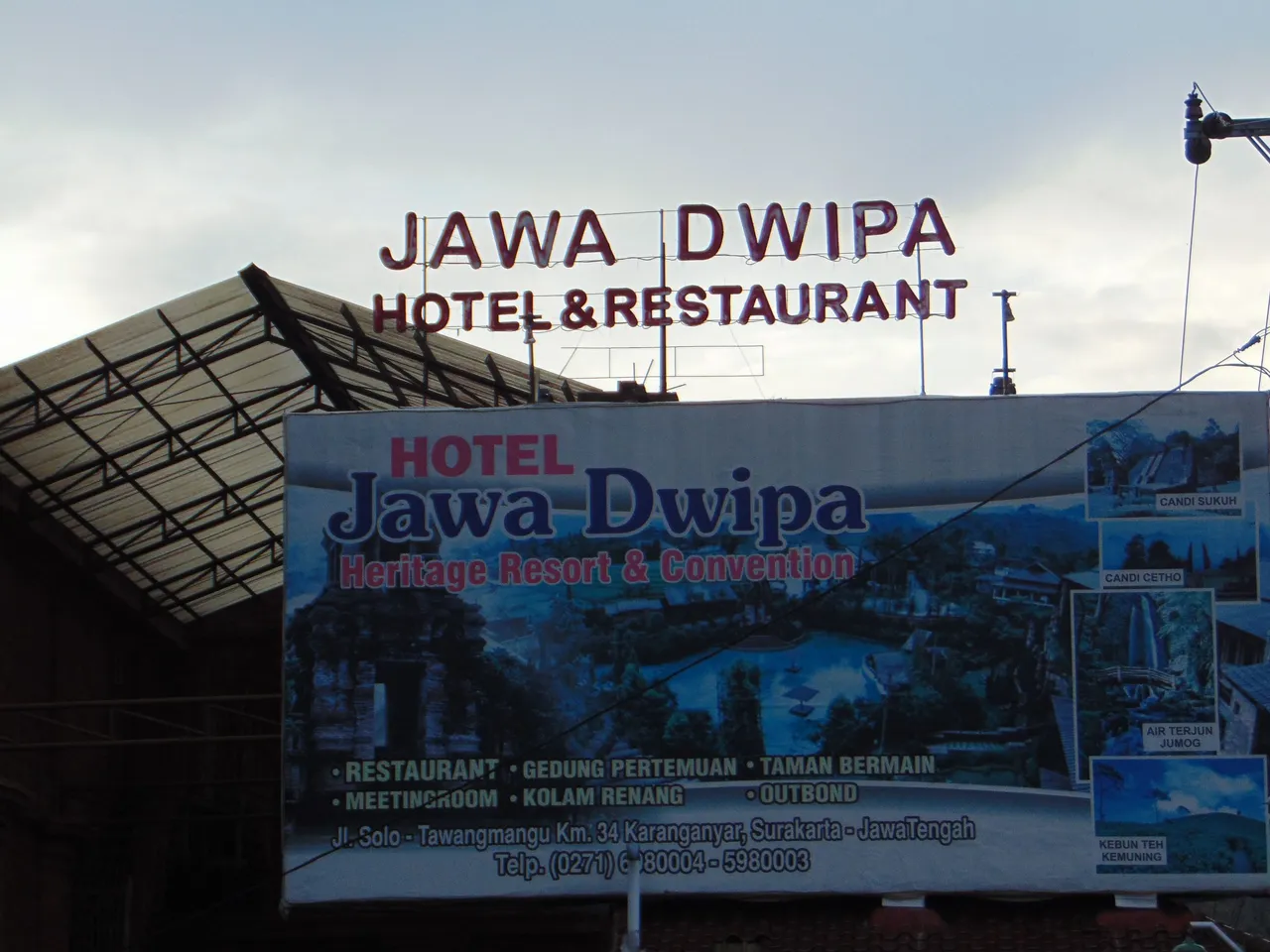
The Lobby

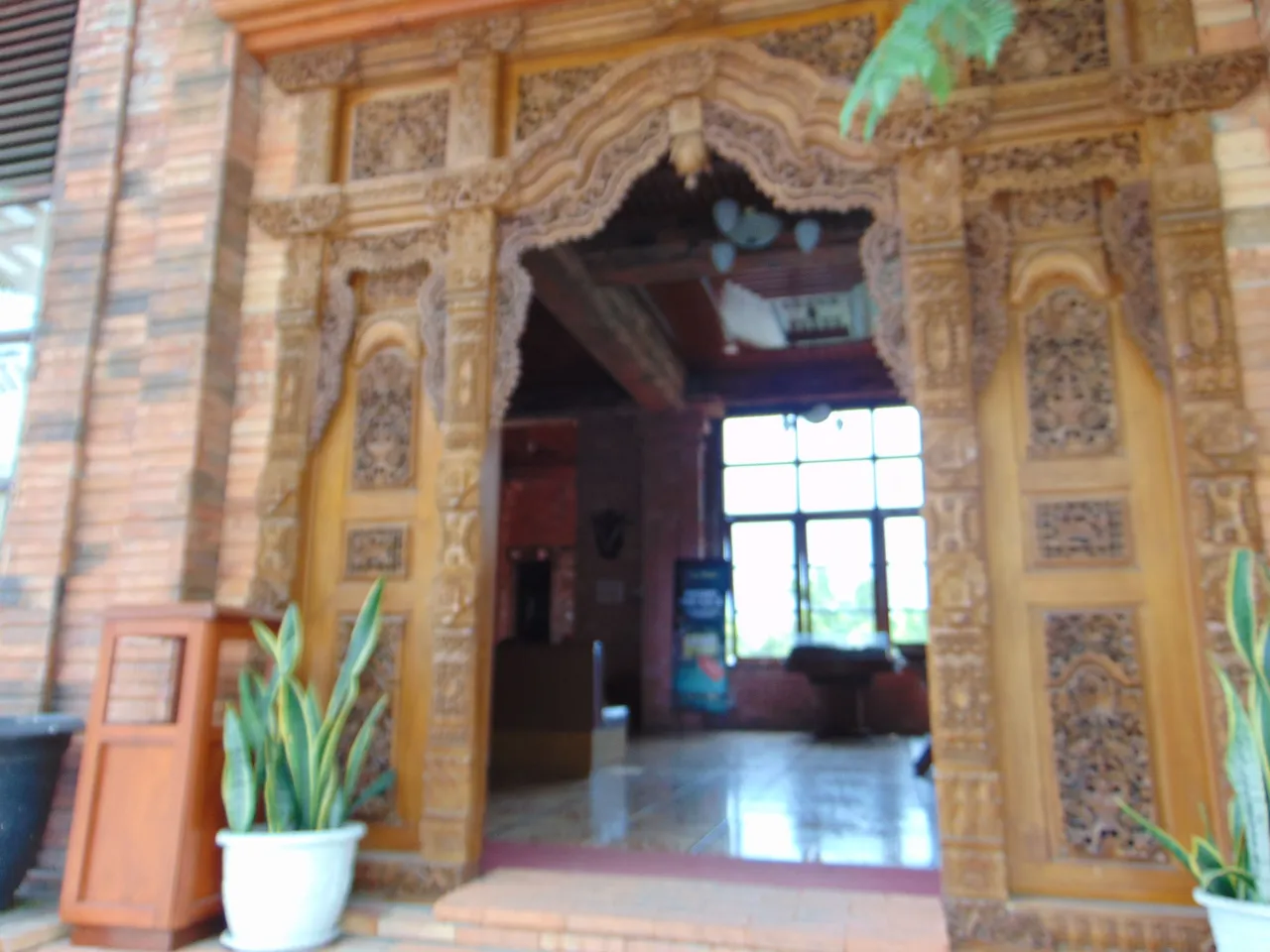
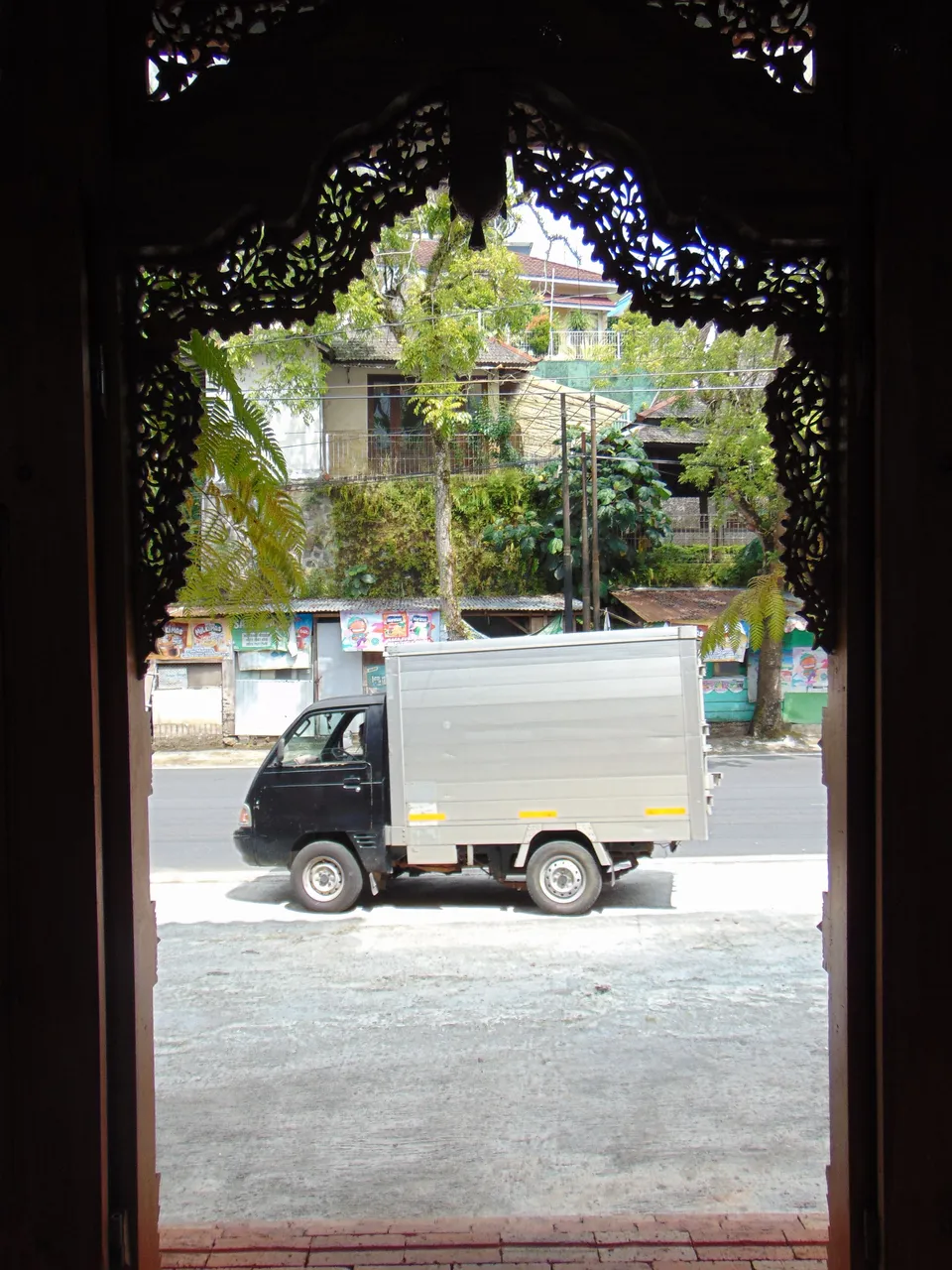
From my first impression, the walls of this resort were made out of bricks with a door that has central javanese carvings. From what I know, east java is not famous for its wood carvings in fact it's central java that is famous for any furniture from wood and also carvings. When a place is made of bricks in terracotta color, any javanese would know that it's more identical with eastern java than central java architecture. So, this place was giving me a bit of mixed signals and perhaps a fusion would be best to name this place.
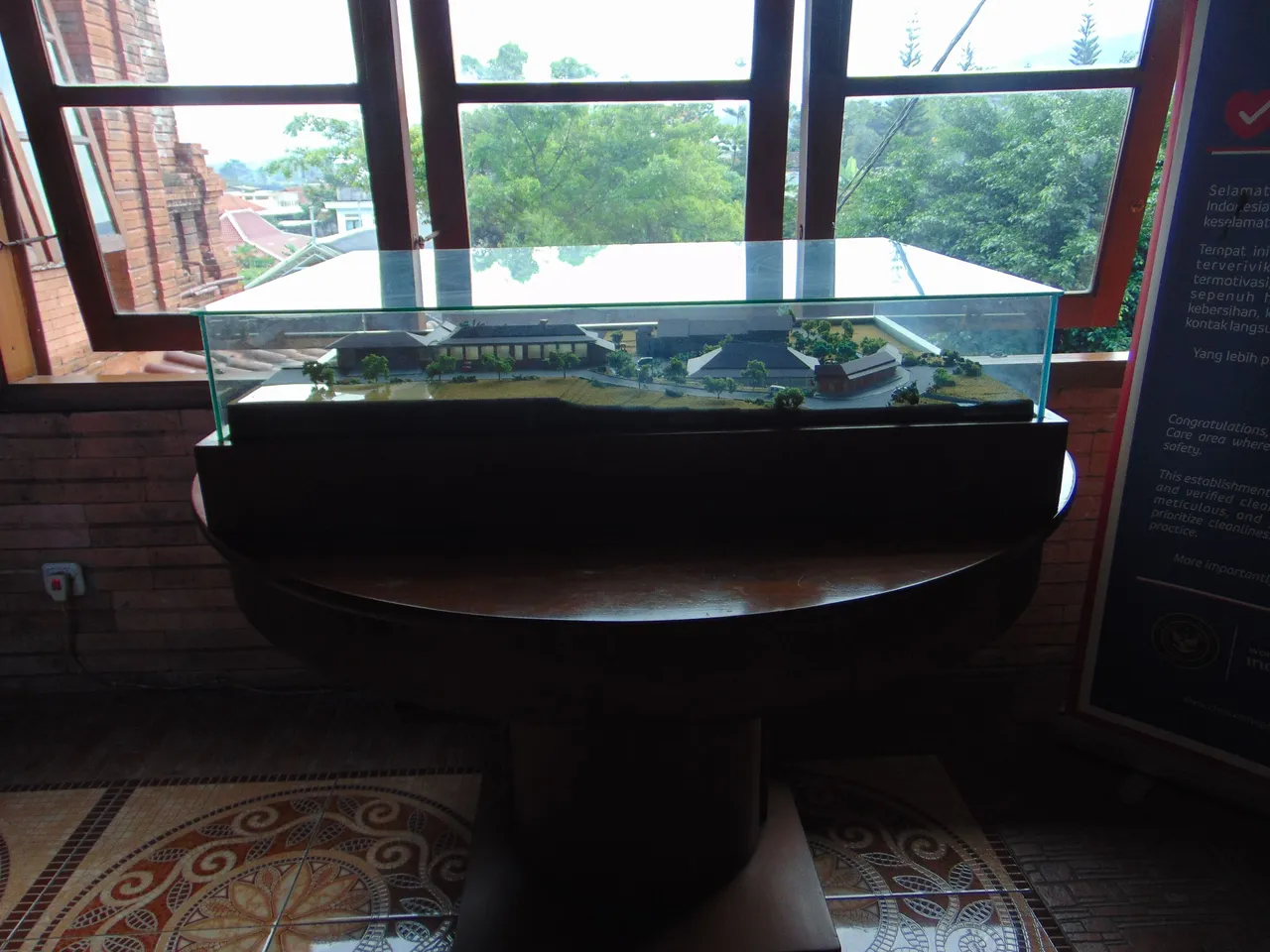
This place is quite massive. I don't know the exact number but seeing the miniature itself, there are more than 20 rooms with several buildings in this resort with a massive pool made of bricks. This is the main view of the place as the temple looks like a gate which is commonly found around east java temples and architecture. It’s unfortunate that I could not take pictures when I visited the place because east java is quite strict with their temple intellectual privacy laws.
The Surrounding Area
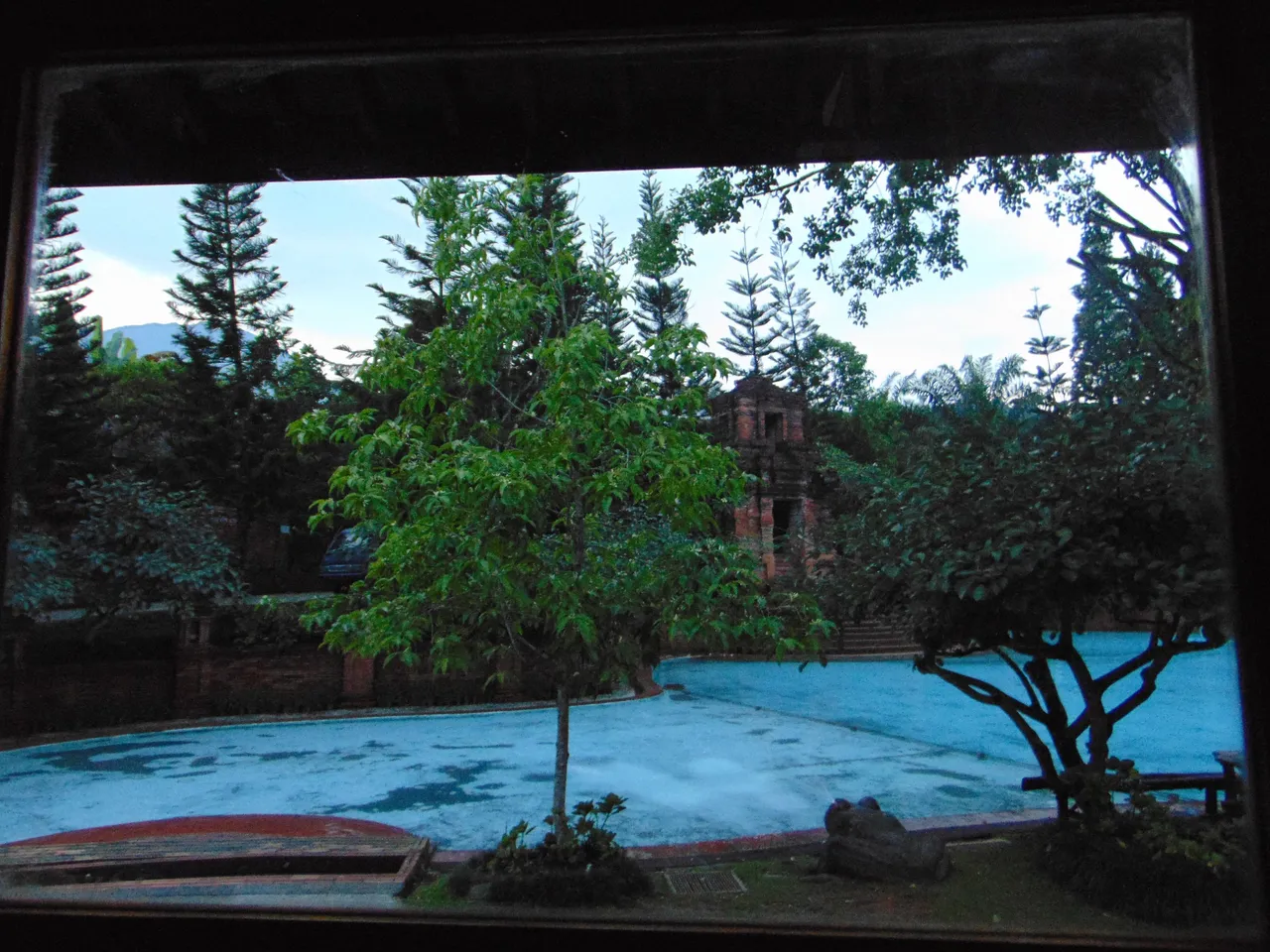
My family and I only got to explore the area before breakfast. Our room has a direct view to the pool and it was mesmerizing to see from inside the room.
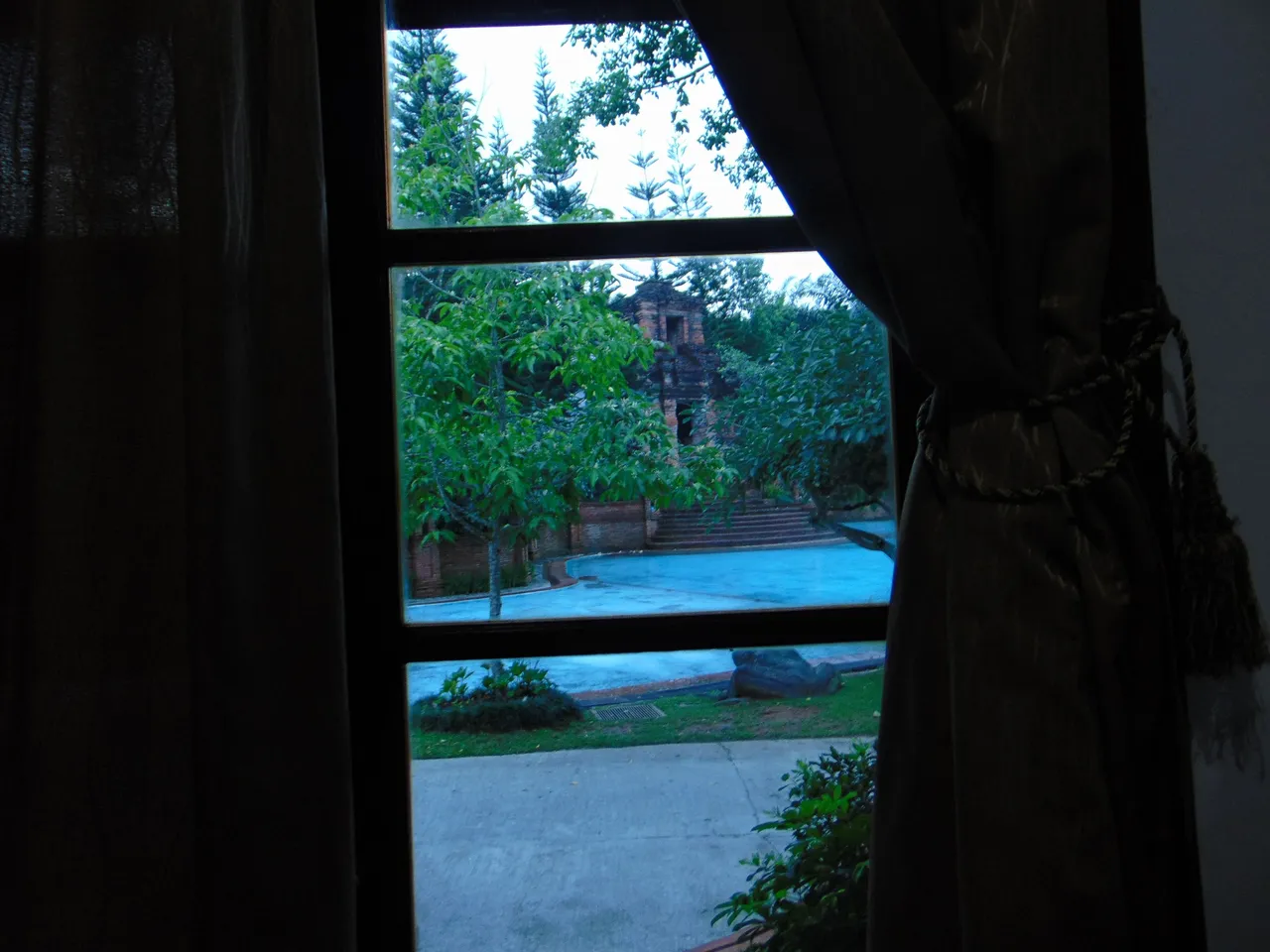 | 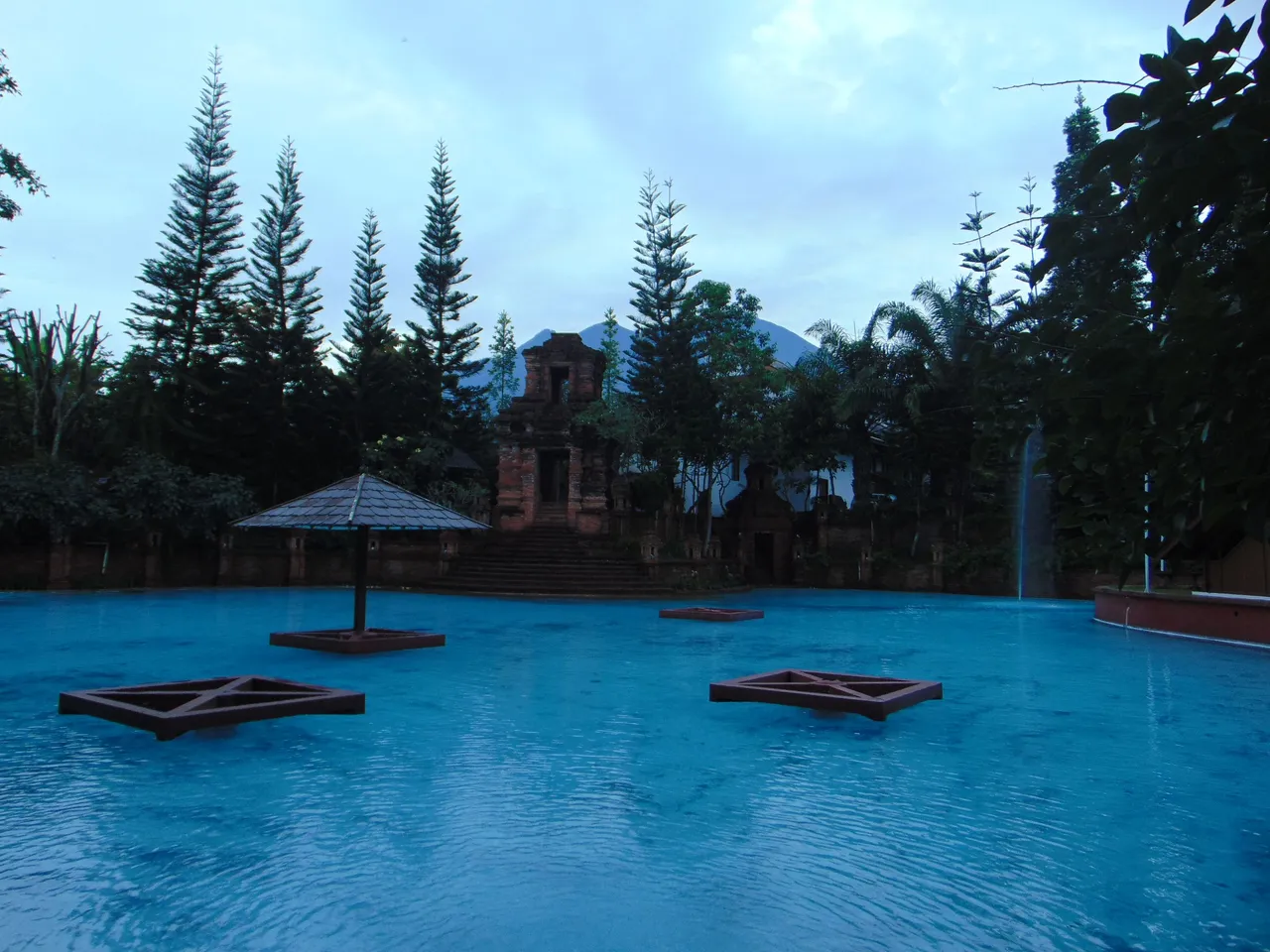 |  |
When I stepped outside, Mt Lawu was visible adding cherry on top to the view. The pool itself is quite massive with the center being the gate with stairs that’s made from bricks.
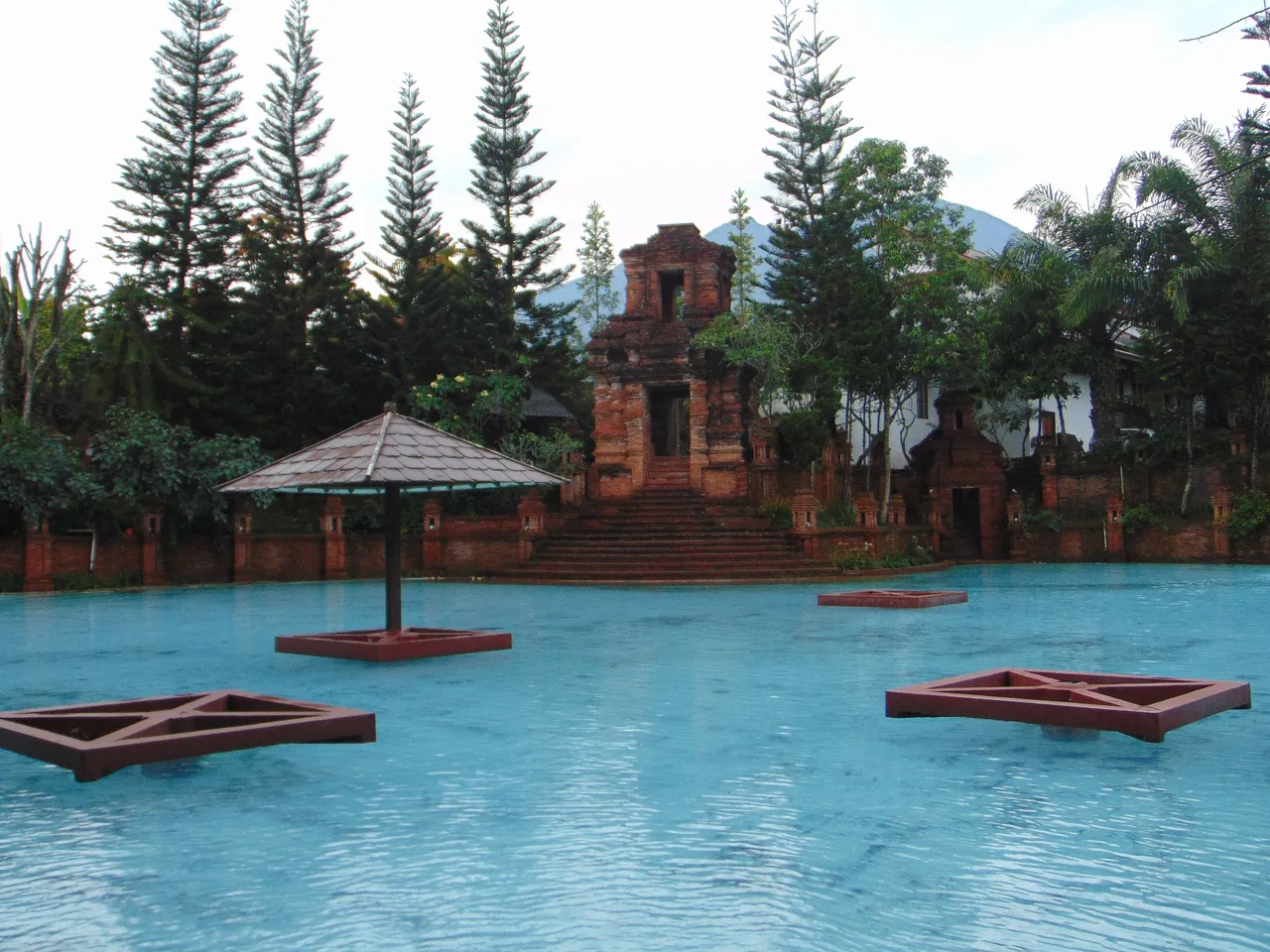
To be honest, seeing this type of architecture in central java was a bit odd as they also have their own stone gate version which is equally mesmerizing. But given the concept and that the place is actually very close to the east Java border, I guess this is the representation of both cultures in one place.
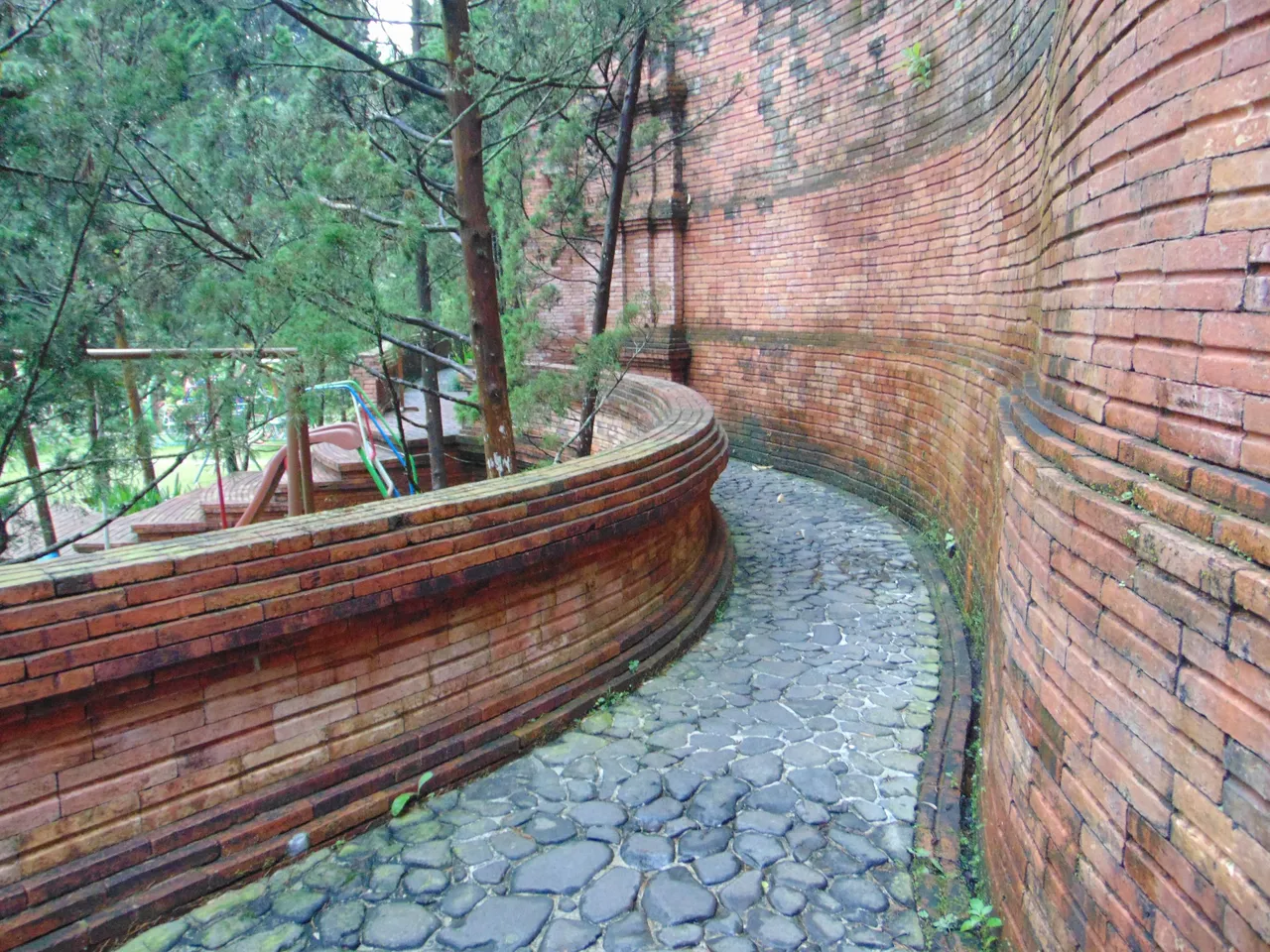
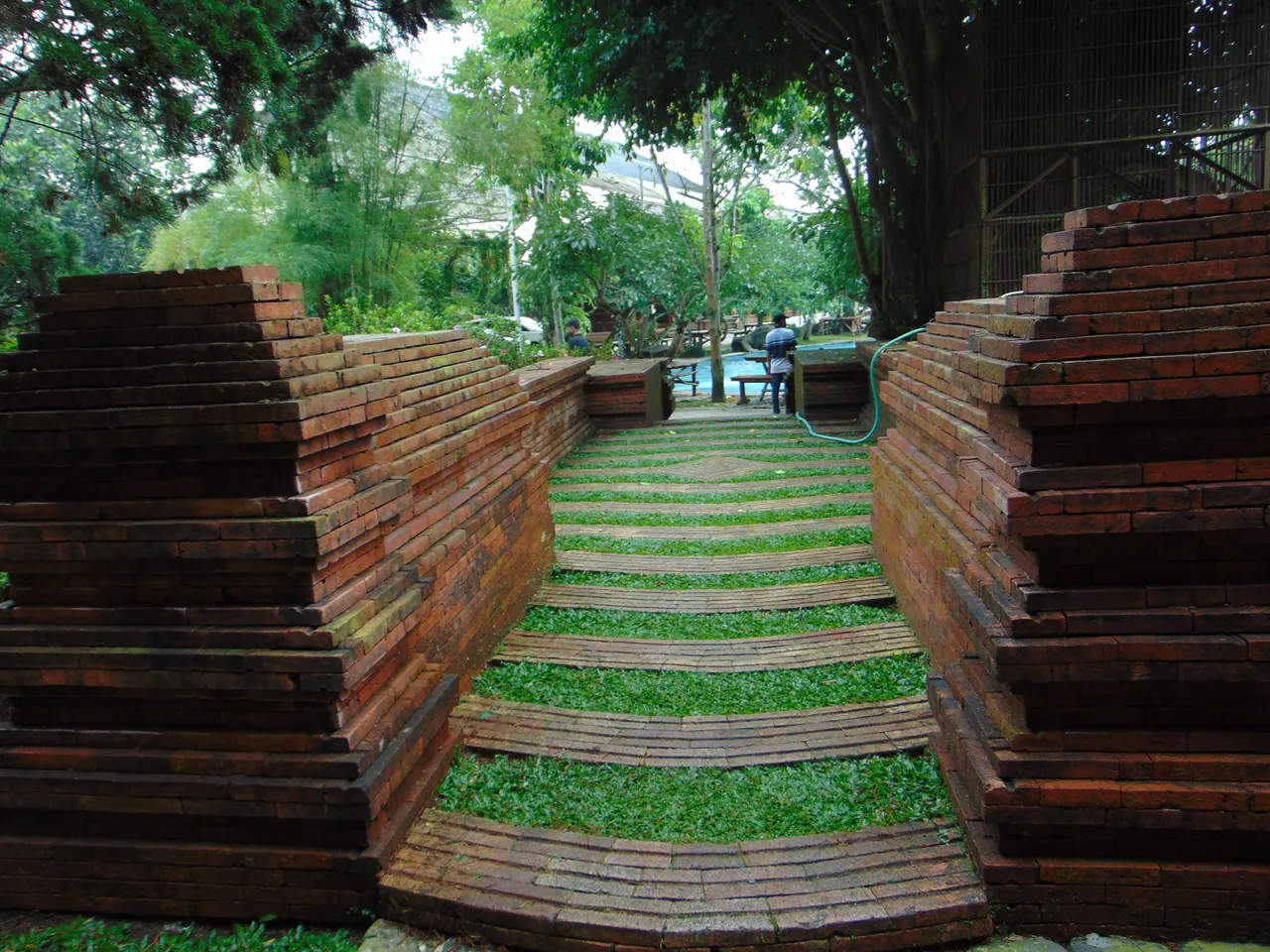
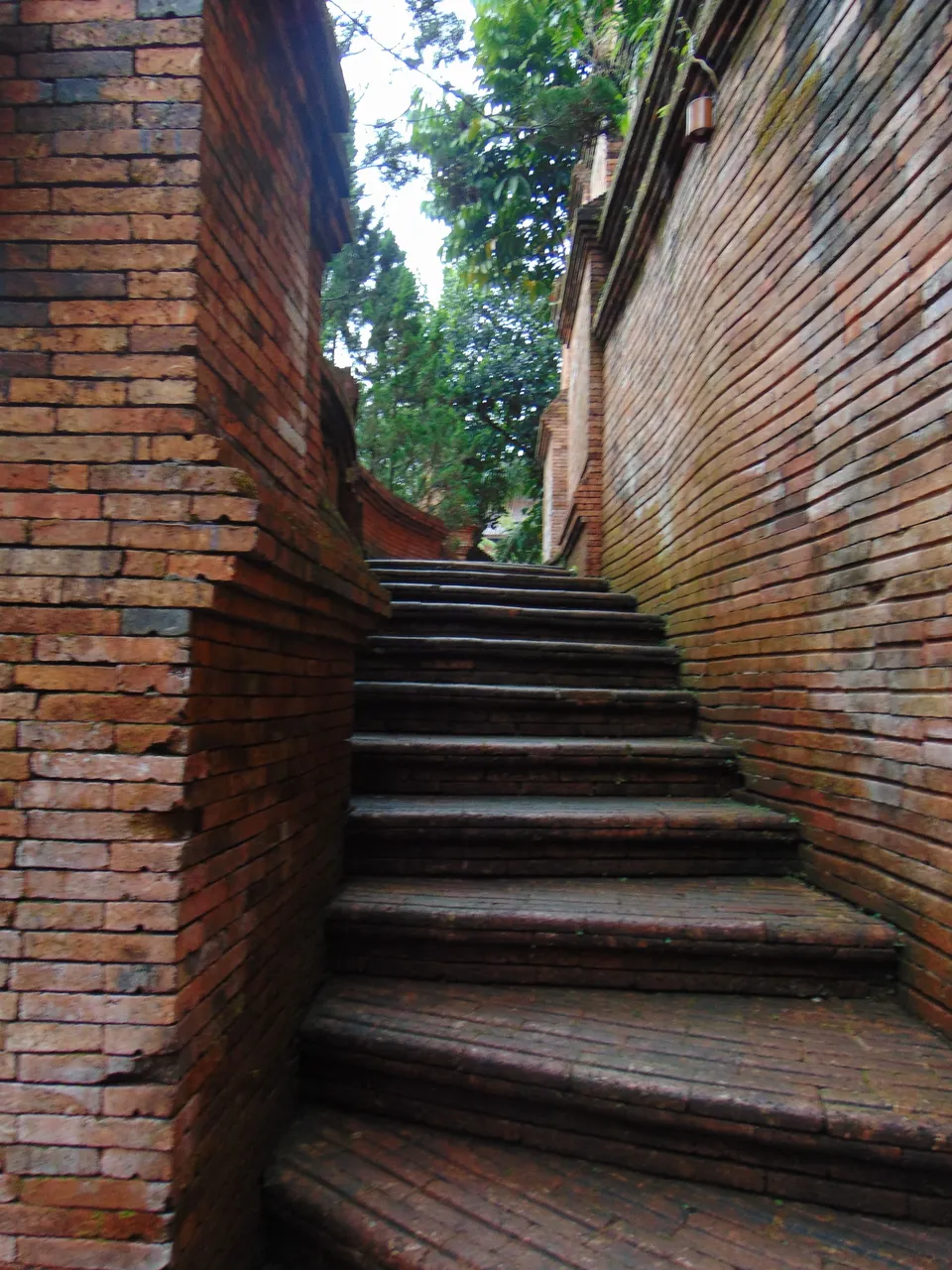
There’s also a walking trail with a few animals around it, mostly birds and monkeys. Walking to this trail was transporting me to ancient east javanese where princes or princesses walk through this pathway. In ancient times, this could be an alley that connects chambers between chambers. Around this trail, there’s also children's playgrounds with quite a few rides to try.
To get to the restaurant for our breakfast, we had to climb up almost 5 stairs with each stairs having its own room and attractions such as the pool table. Some garden view rooms and some traditional rice grinder. The interior and even exterior of this place is also dominated with polished wood. The furniture around the area is also made of wood.
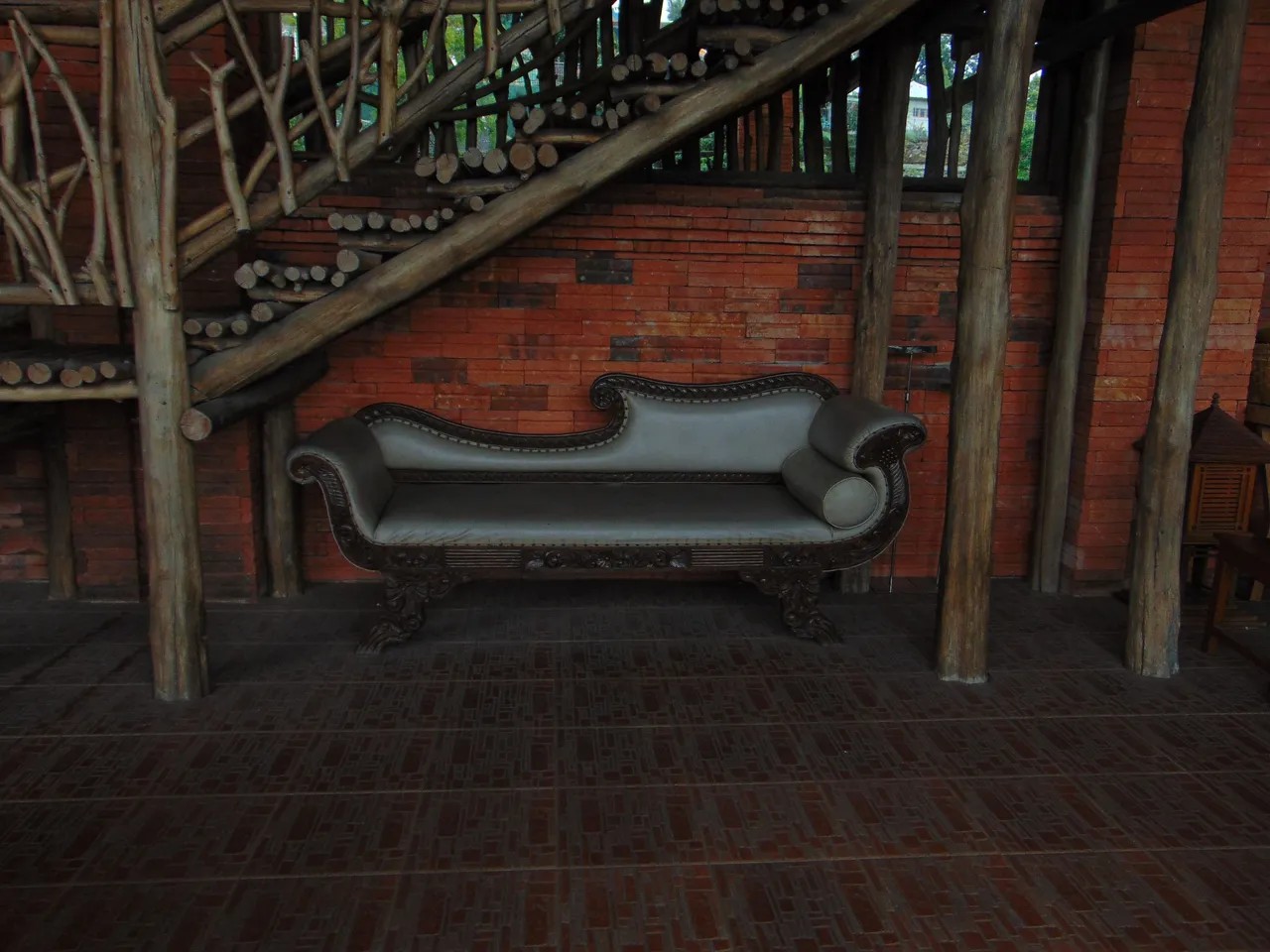
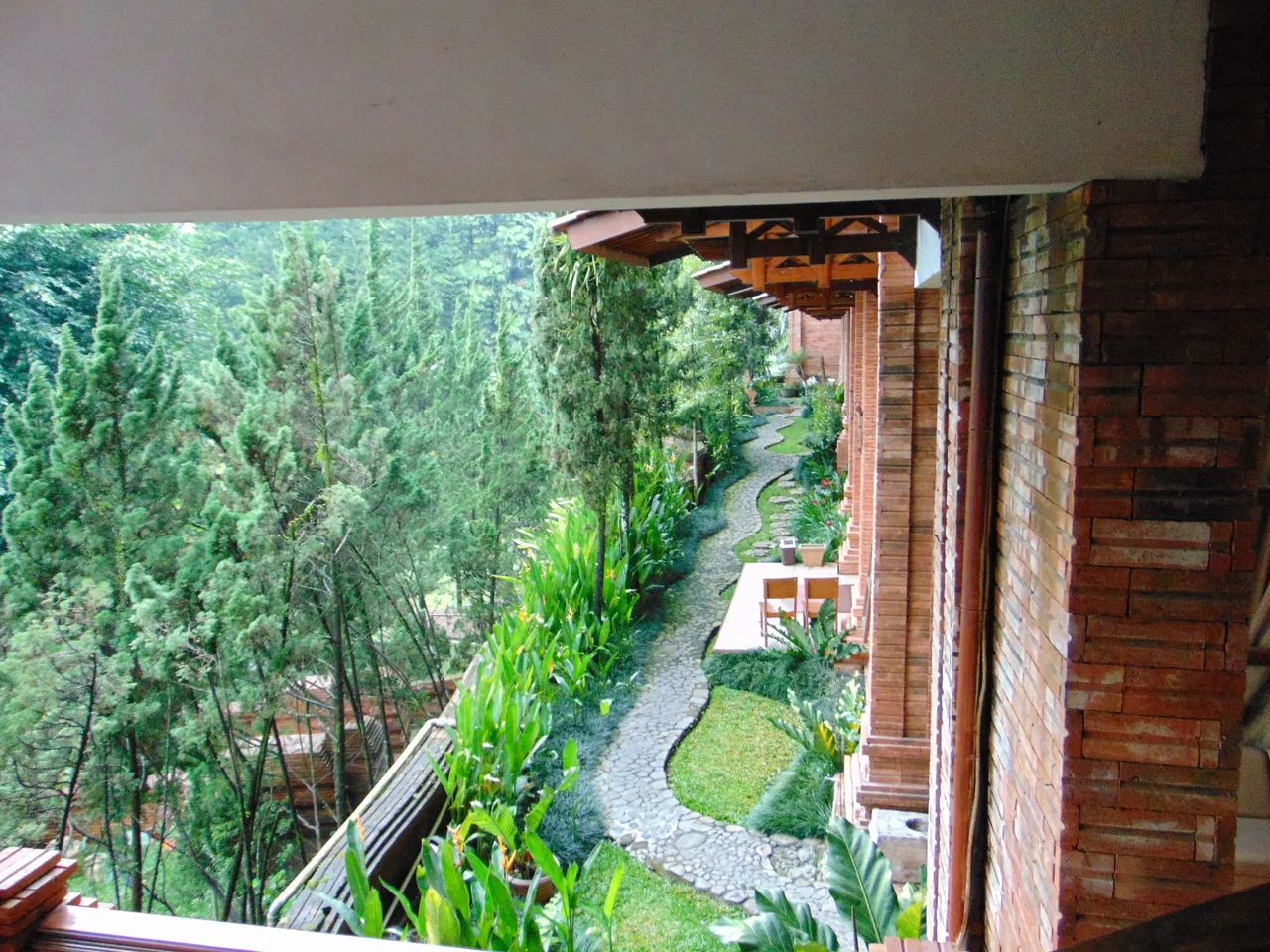
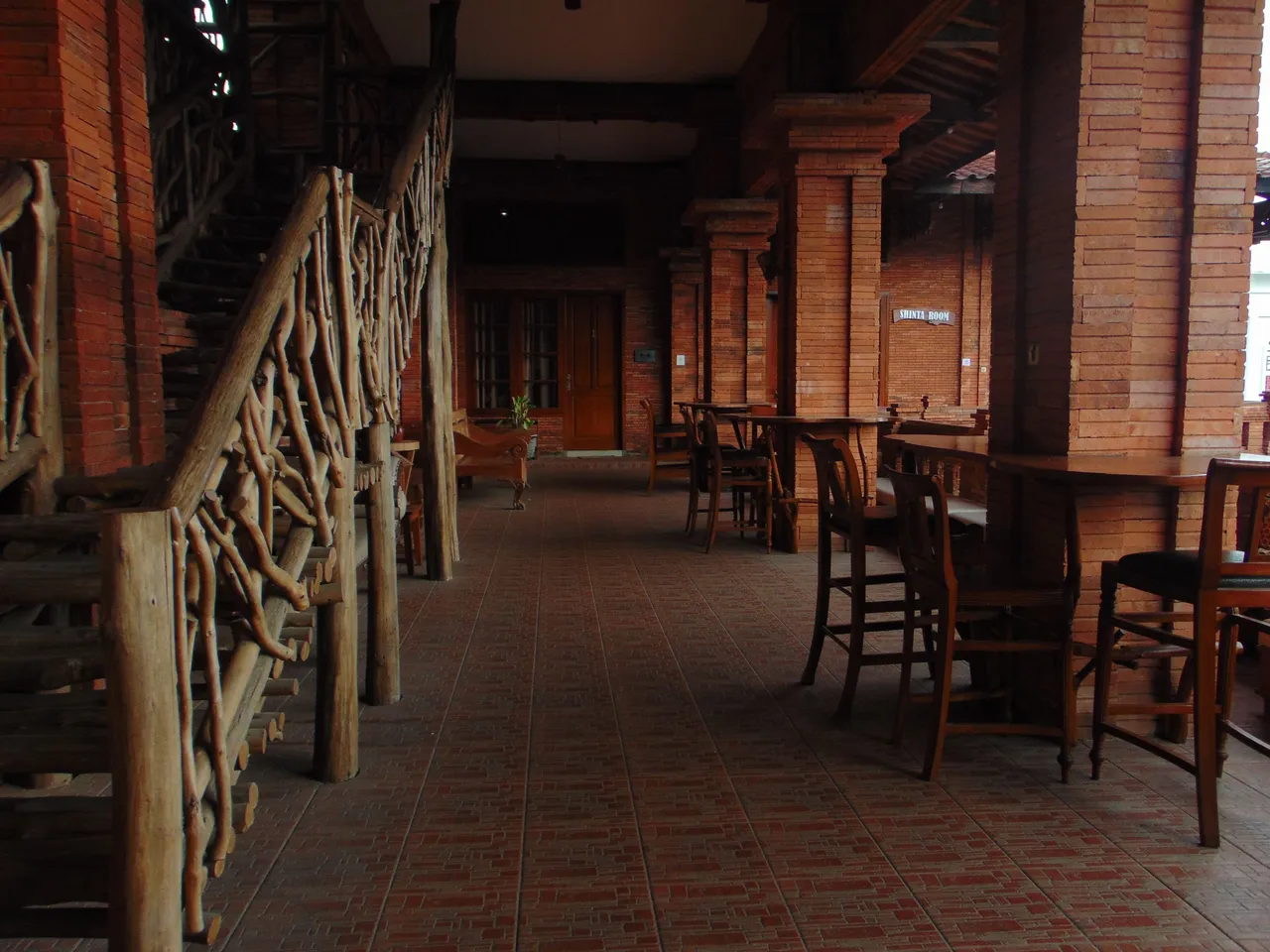
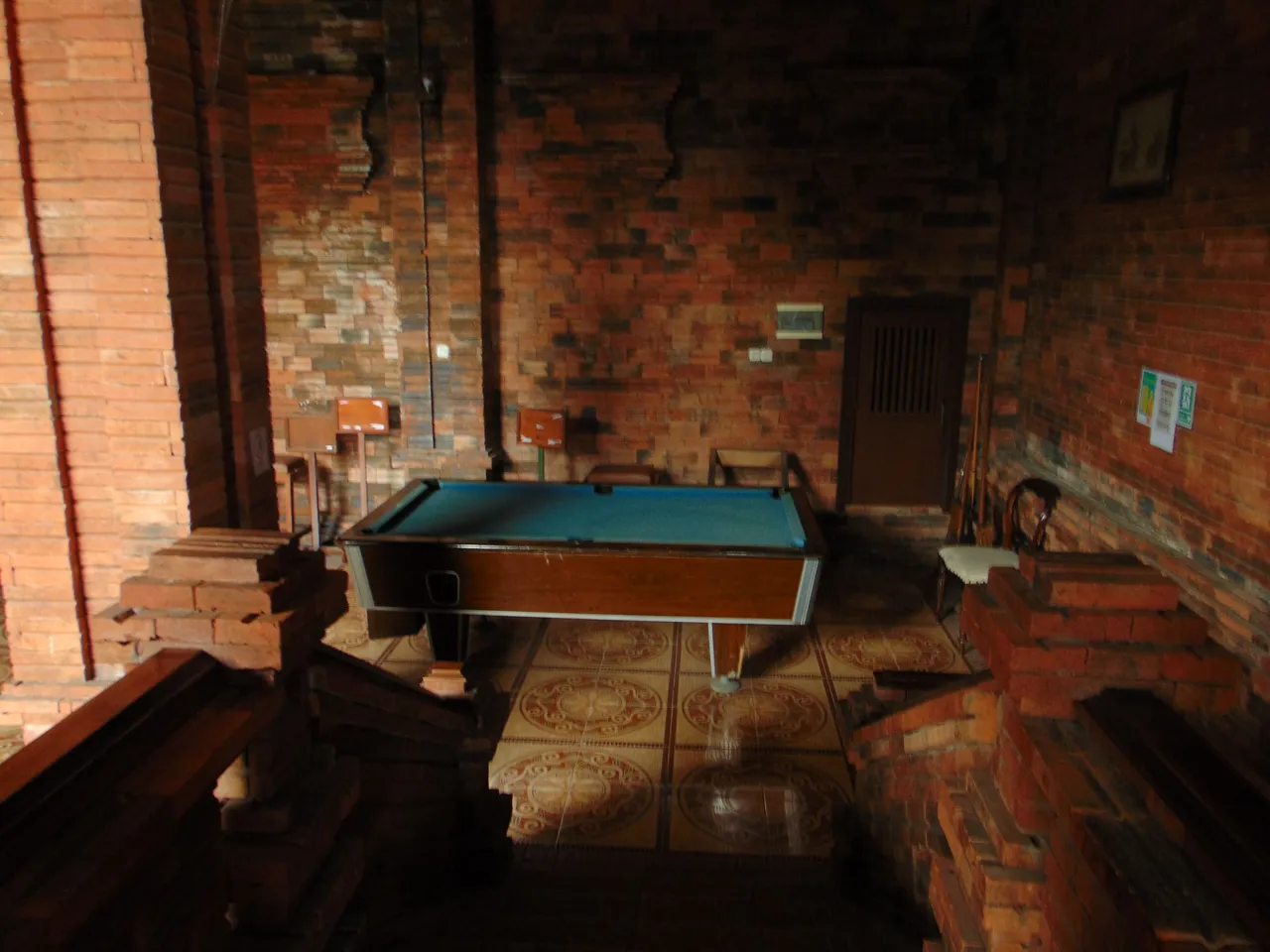
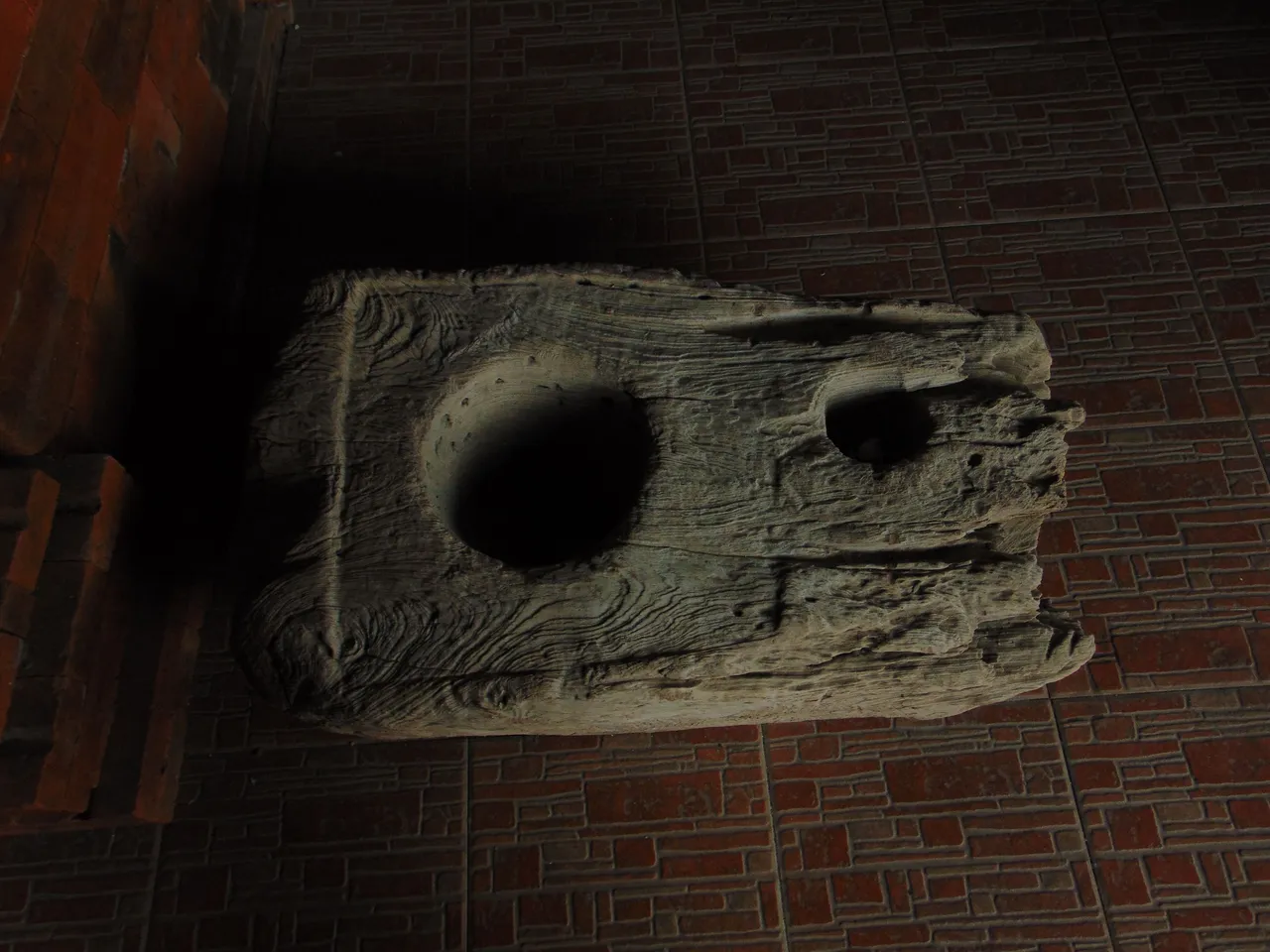

The Restaurant
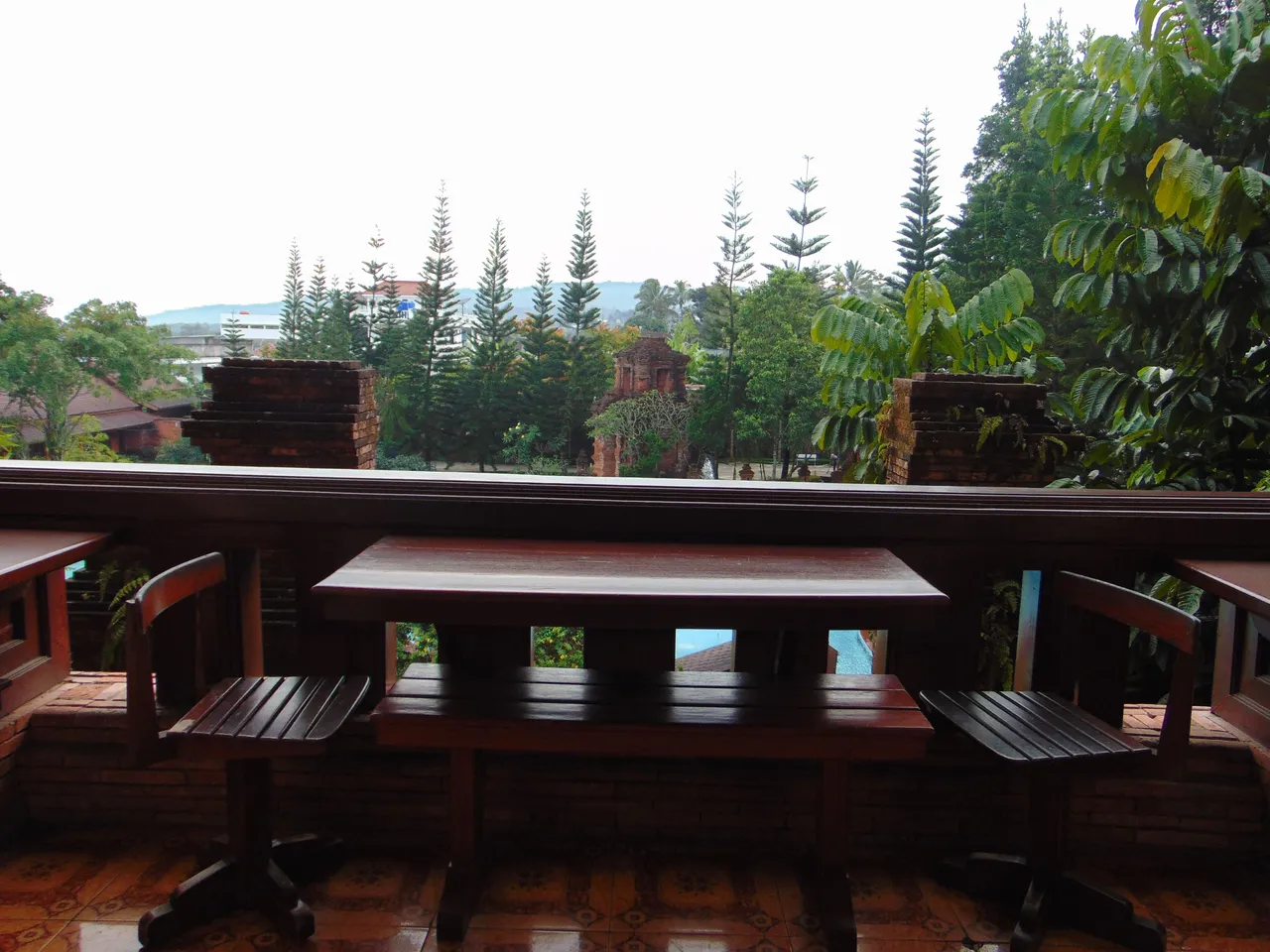
The restaurant itself is attached to the receptionist place/lobby. It is quite massive and can host approximately 100 people inside. It is also equipped with a long table to serve the buffet style breakfast. It has tall ceilings and massive windows that are connected to the outside scenic view. From this place, we can also see the mountain and enjoy breakfast with the view of the mountain and the iconic pool of this place. The food in that place is also really delicious which was something we did not expect.
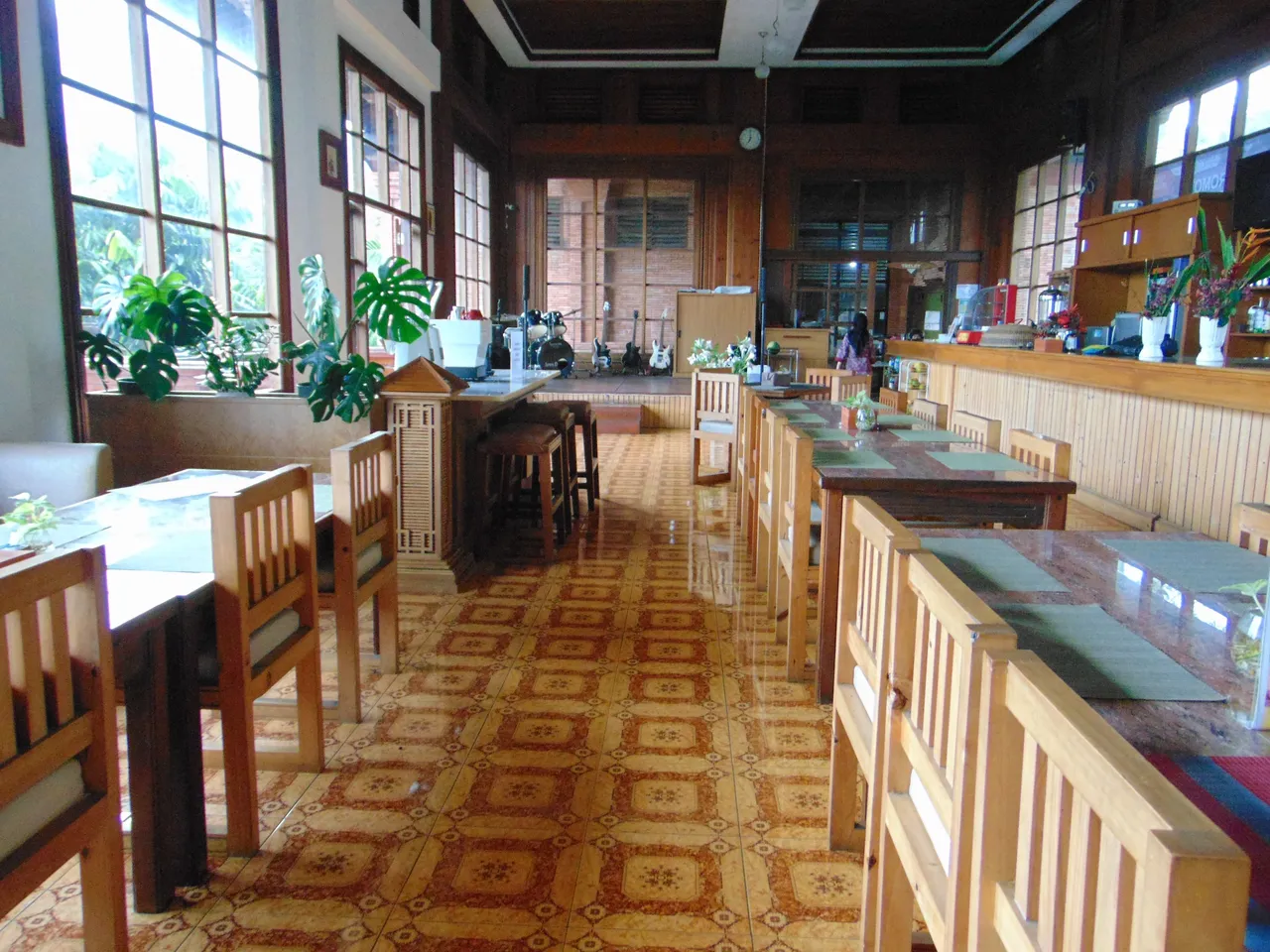
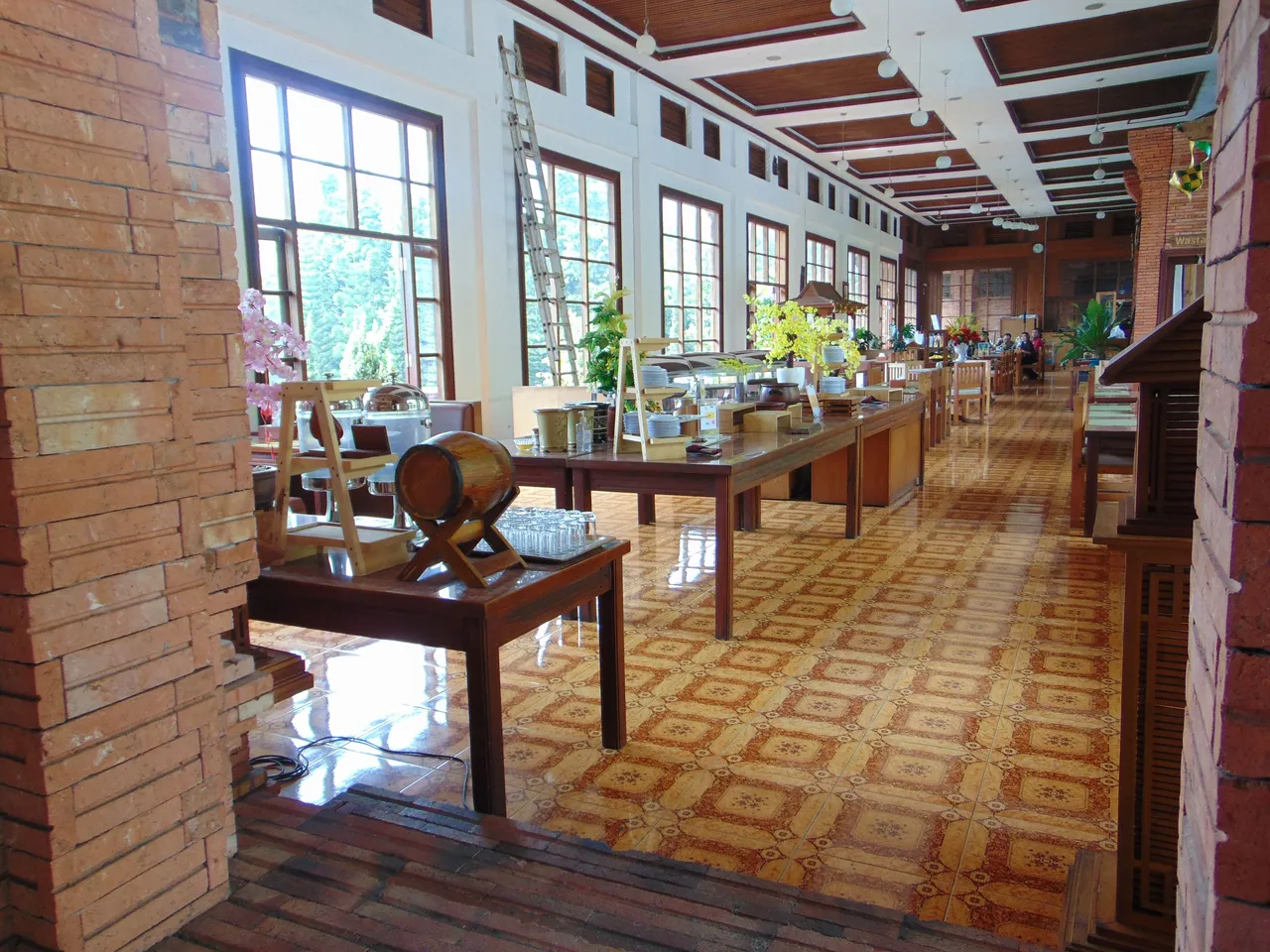
The pool and the temple-like gate from above.
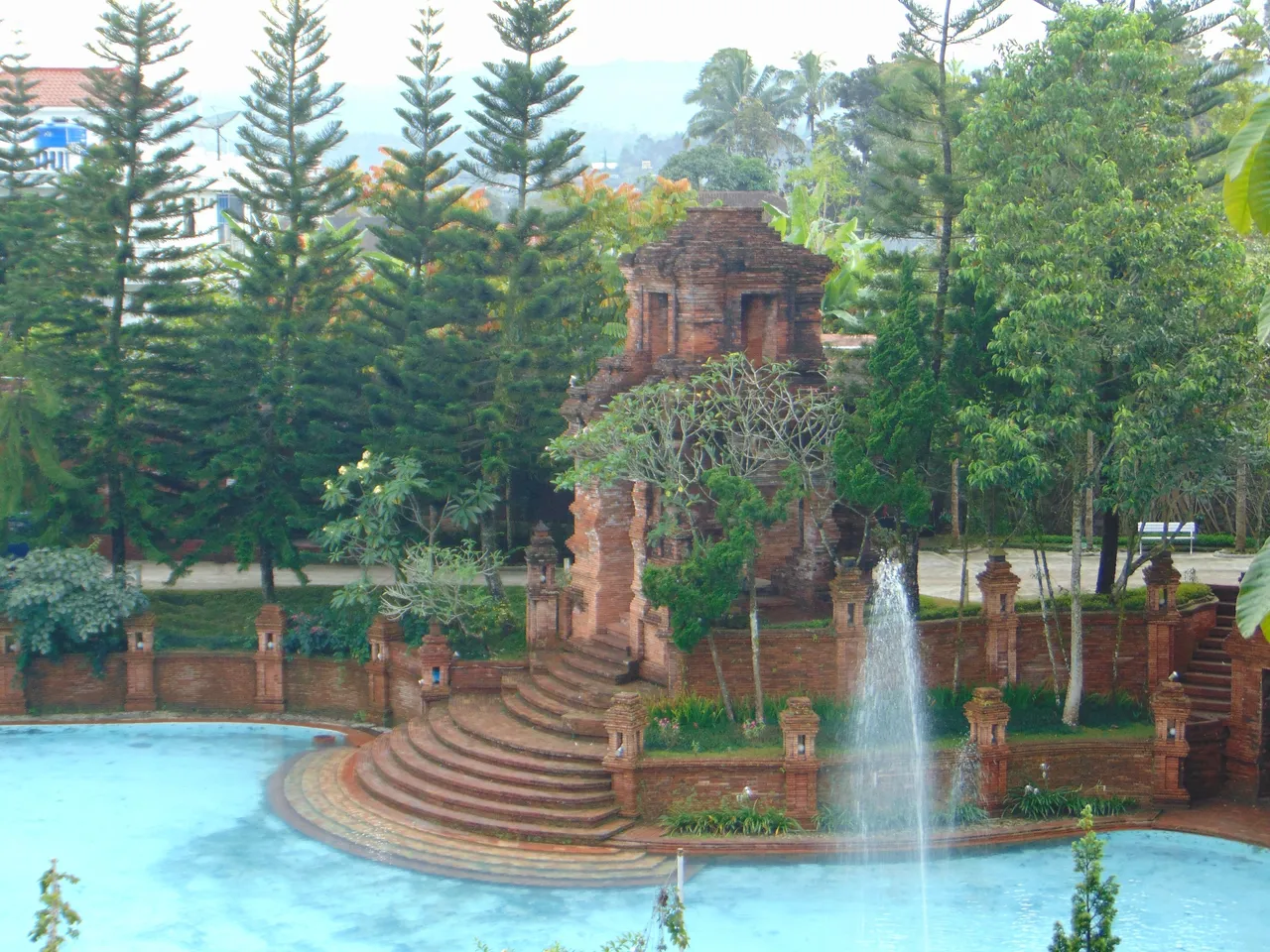
The Pool
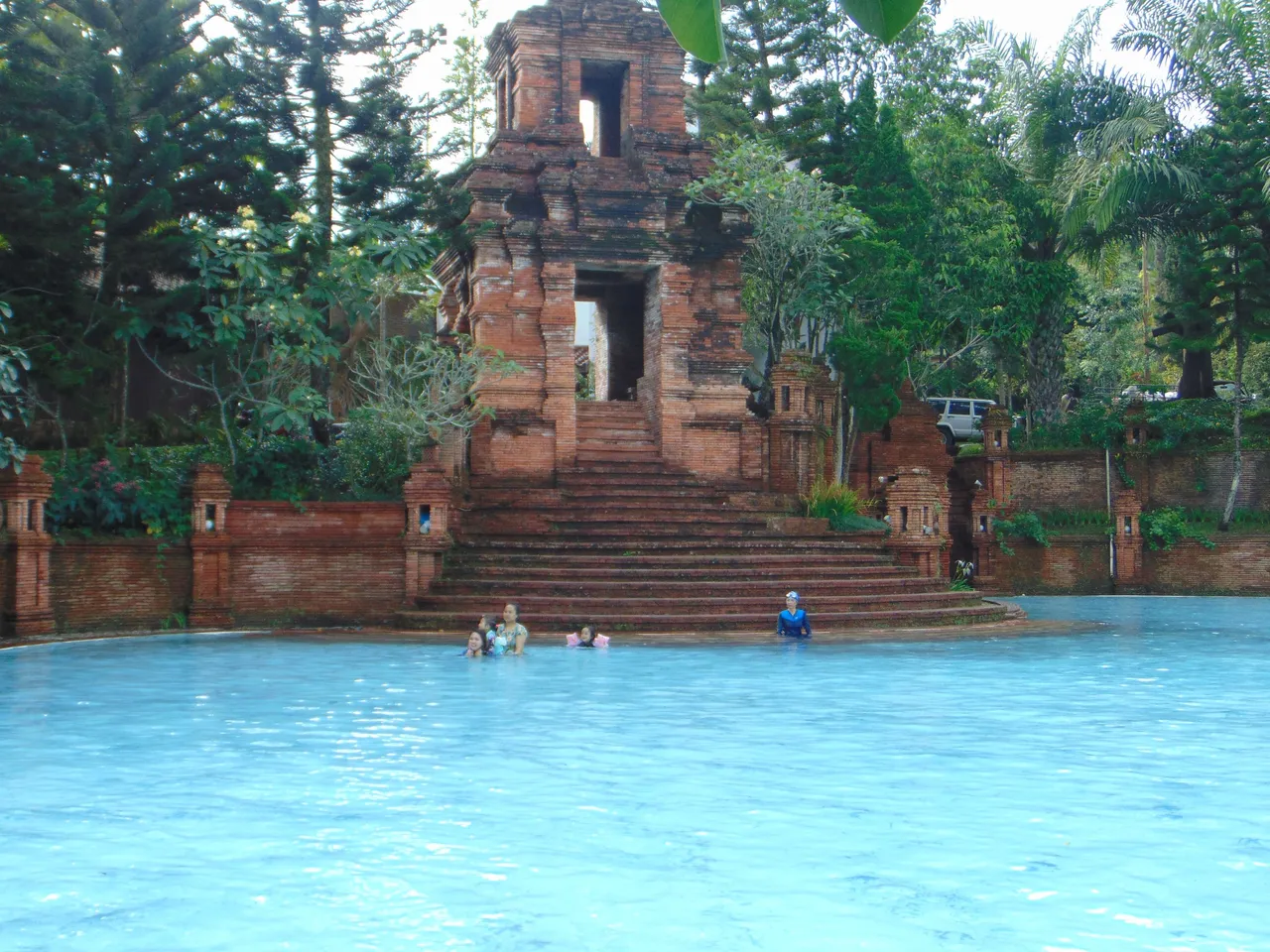
After staying around for a bit, our stay won’t be completed without trying the pool. My mom and I had been wanting to try swimming from side to side. We also wanted to reach the temple by swimming. The pool is also open to the public and they can pay for access to the pool only. There’s also a water fountain and a garden overlooking the pool. The temperature in the pool was quite cold. I reckon it was somewhere around 16C which for us, was the coldest pool we ever tried. Swimming there was not easy but we made it!
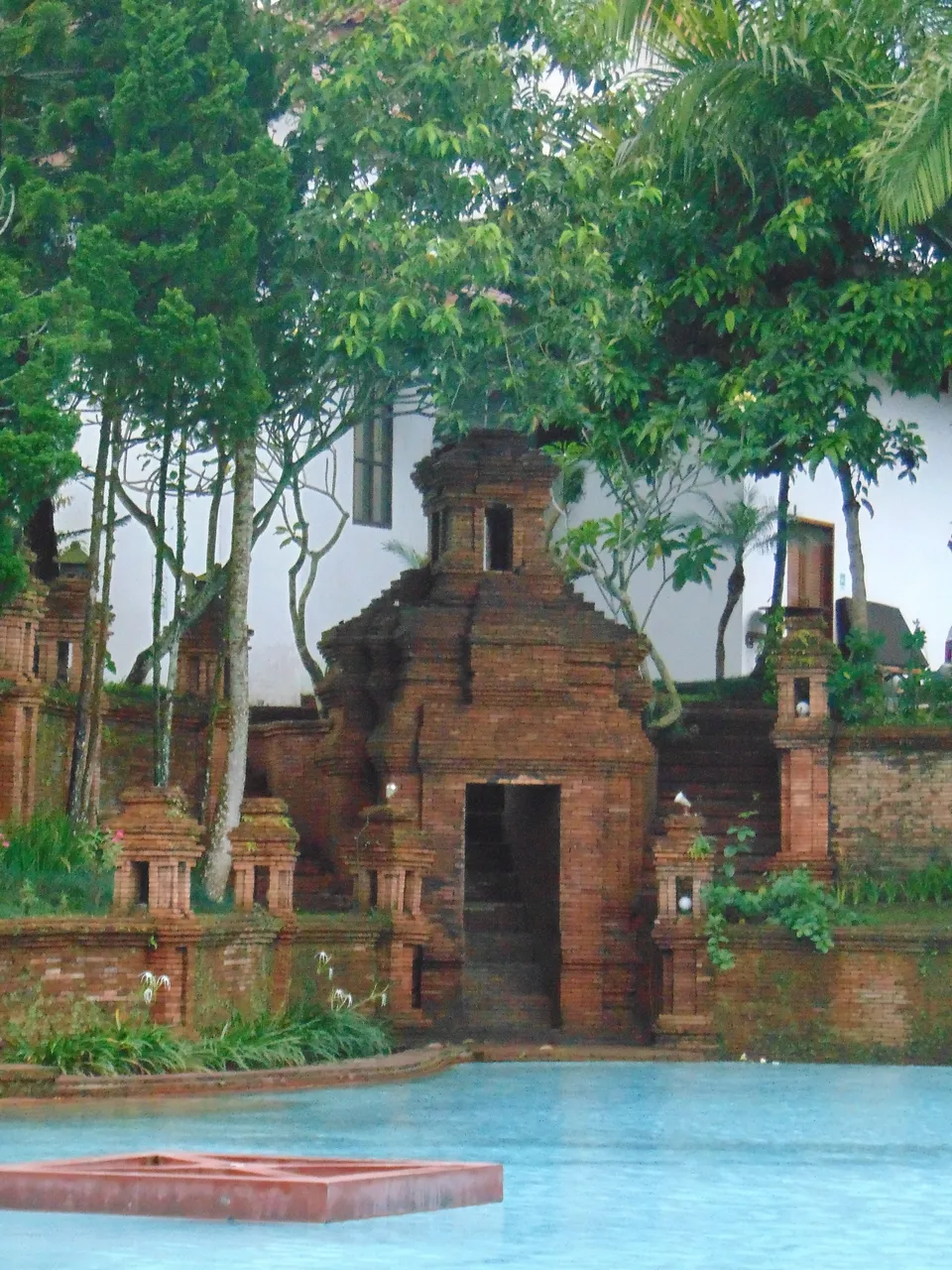
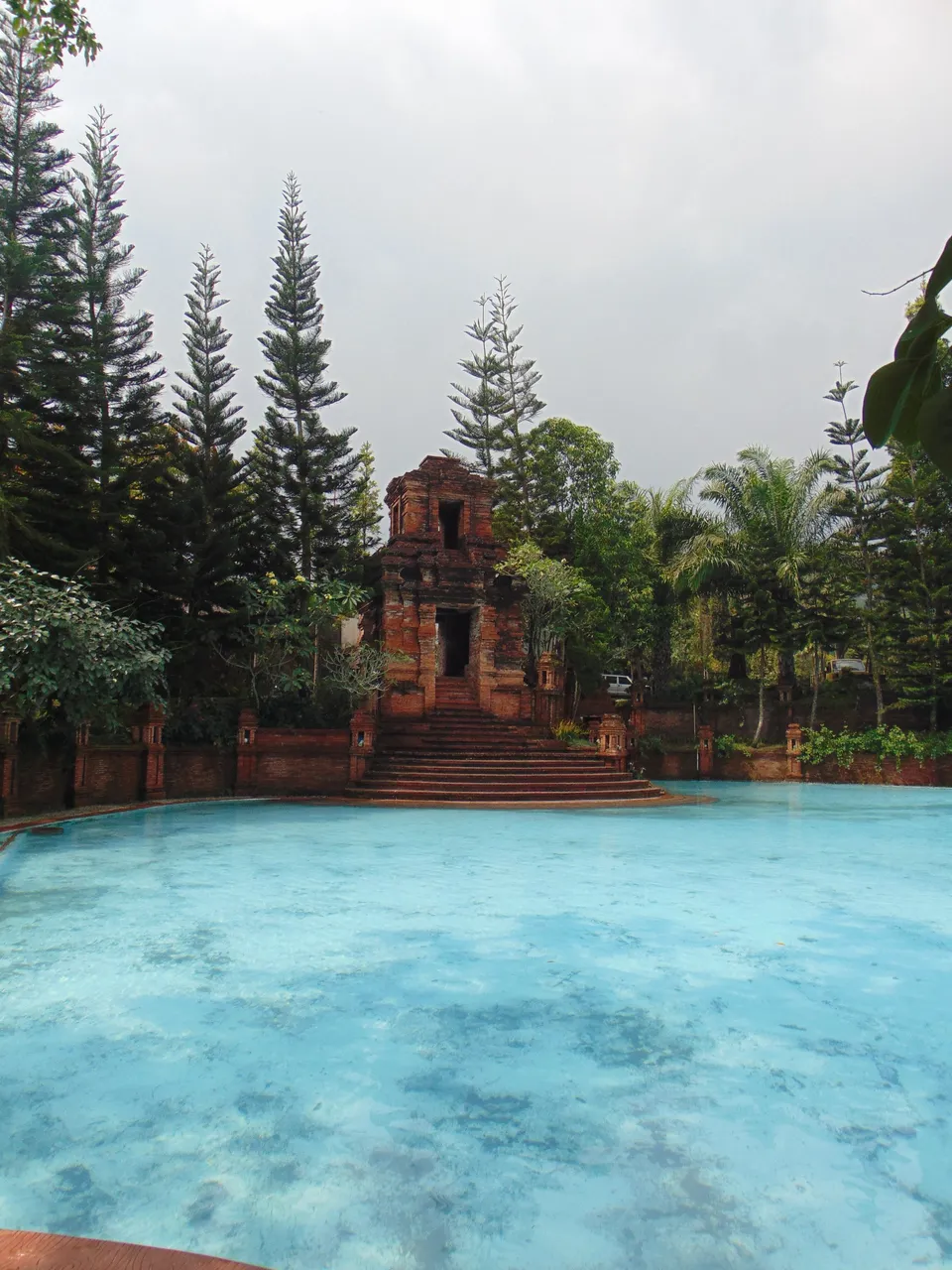

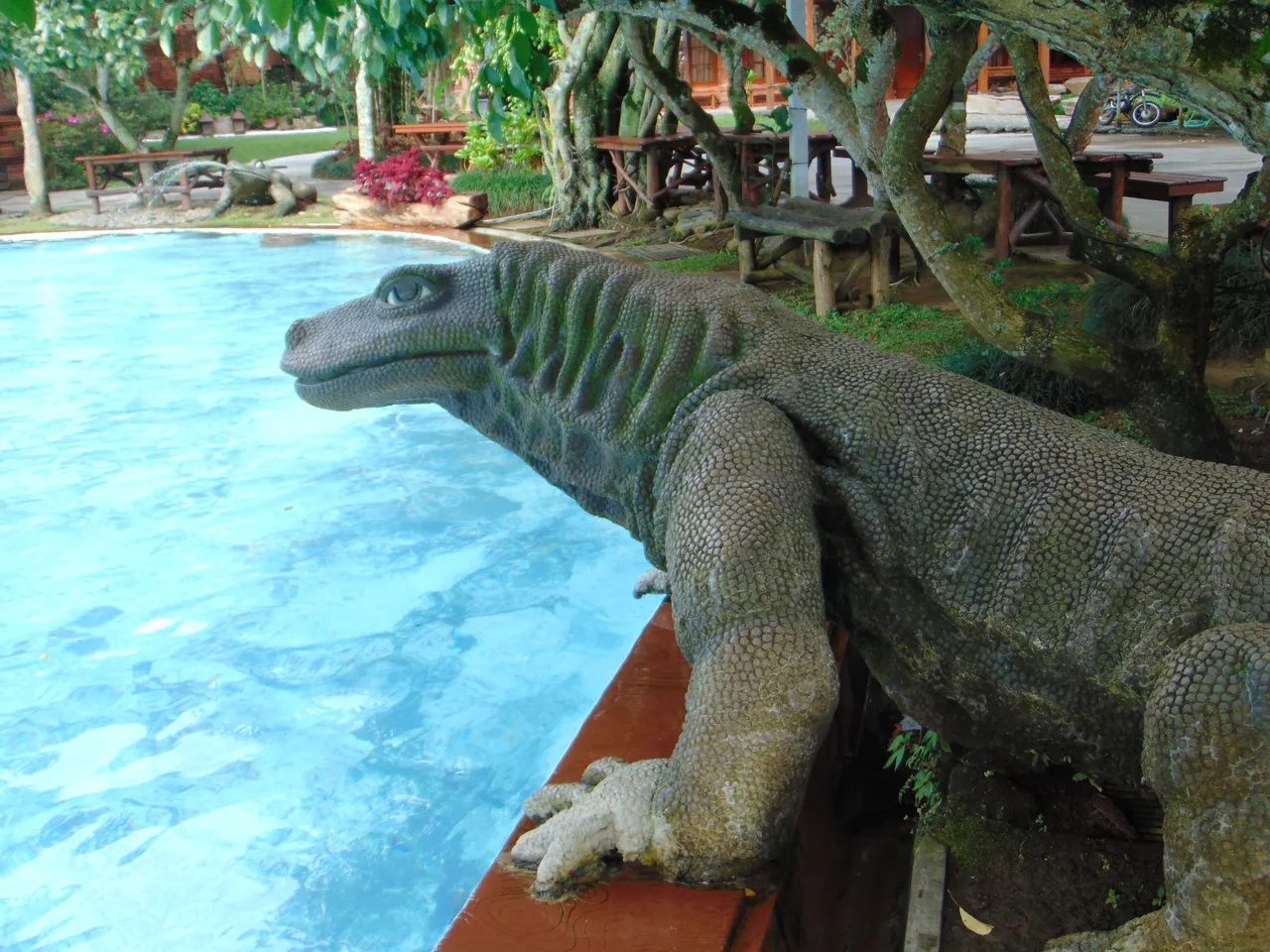
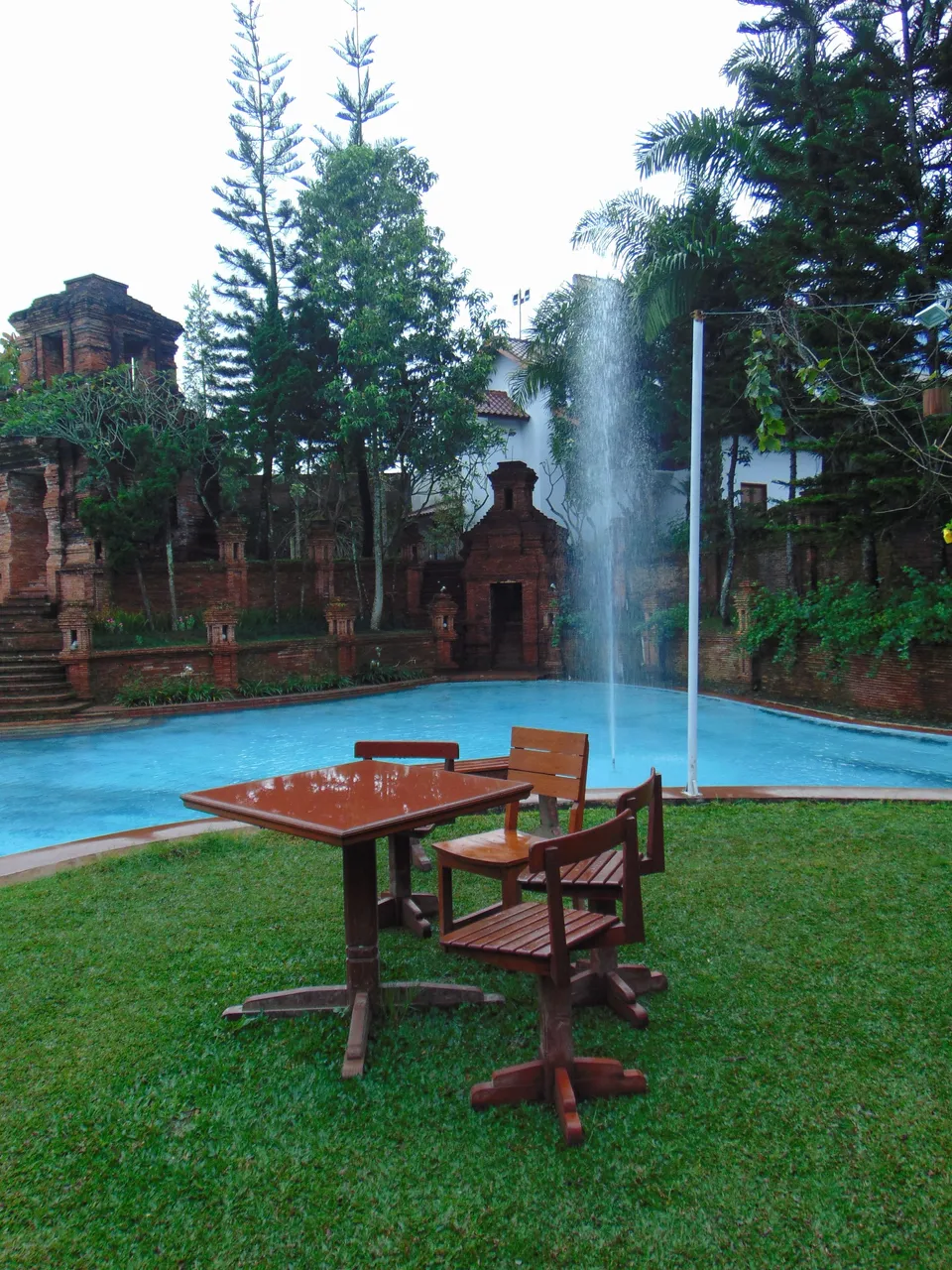
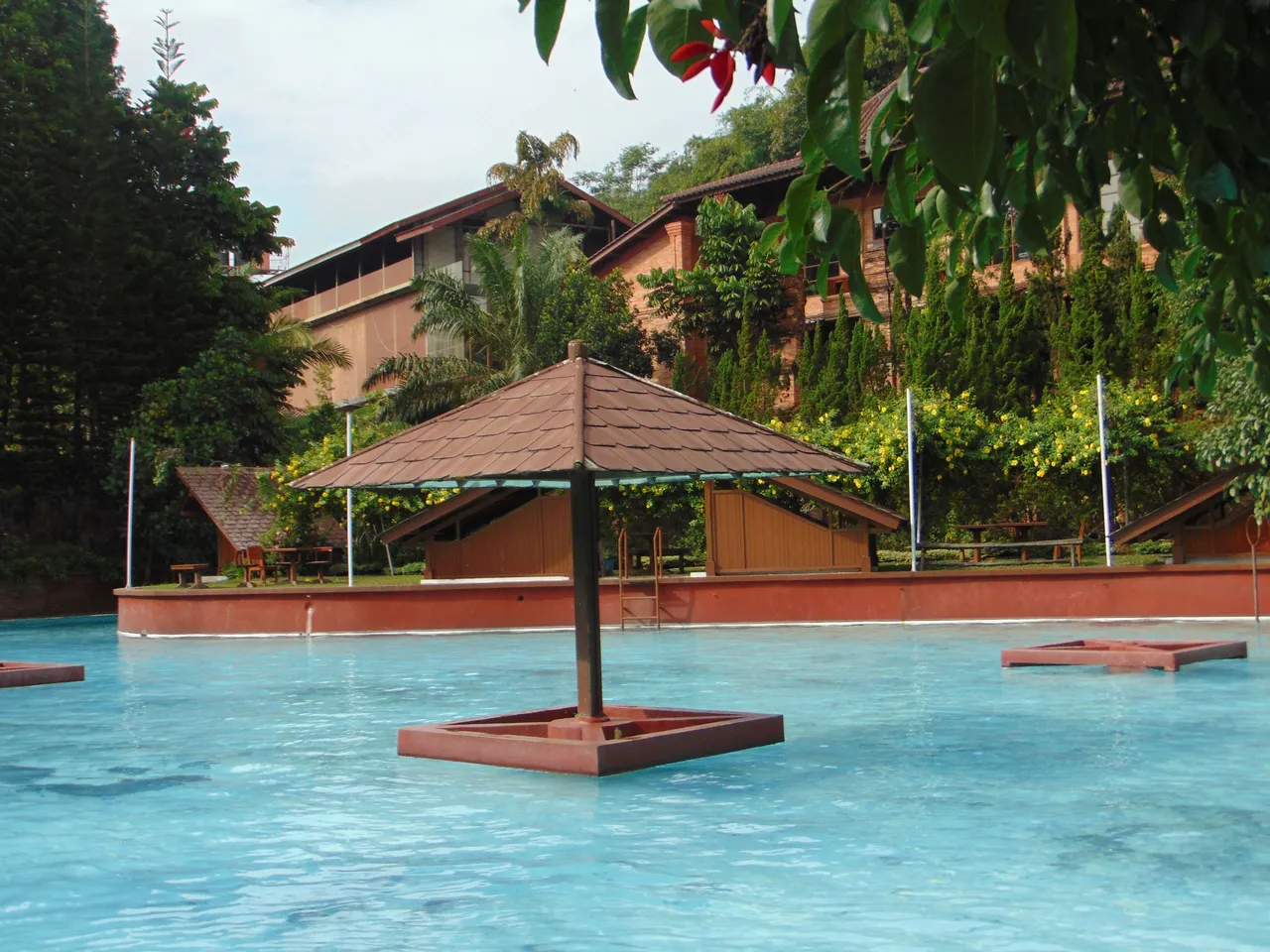
The Room
The final part that I want to talk about is the room. This is the epitome of modern Javanese architecture and even design. Its interior is mostly accented with wood and this even has stairs leading up to the 2nd floor with nothing on it. The bathroom floor was accented with stones and a wooden door that separates the stone bathtub area with the shower and the toilet. My mom even said the toilet is bigger than my apartment :D. Honestly after staying in this place, I can classify this place as a fusion from different parts of java architecture.
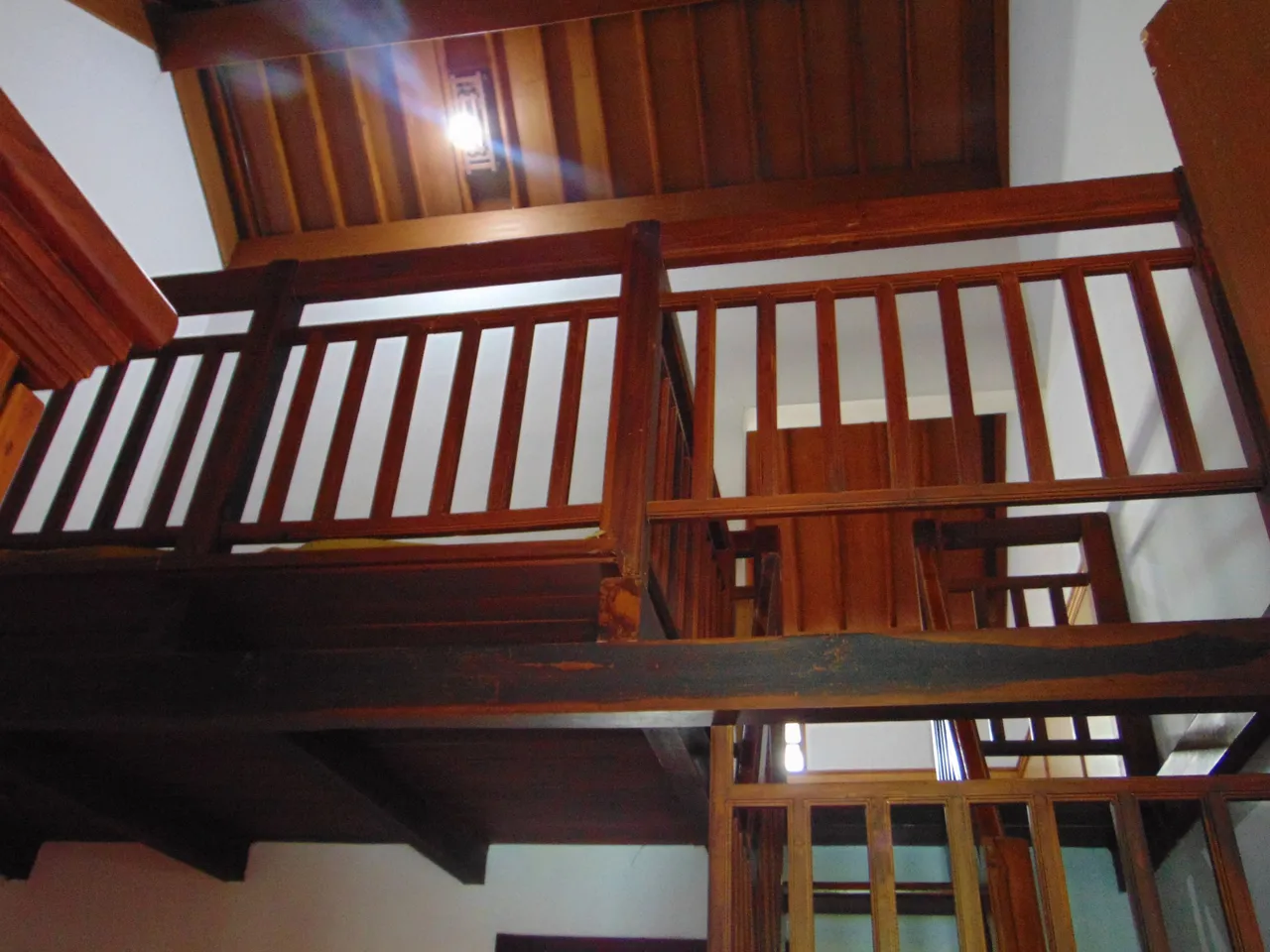
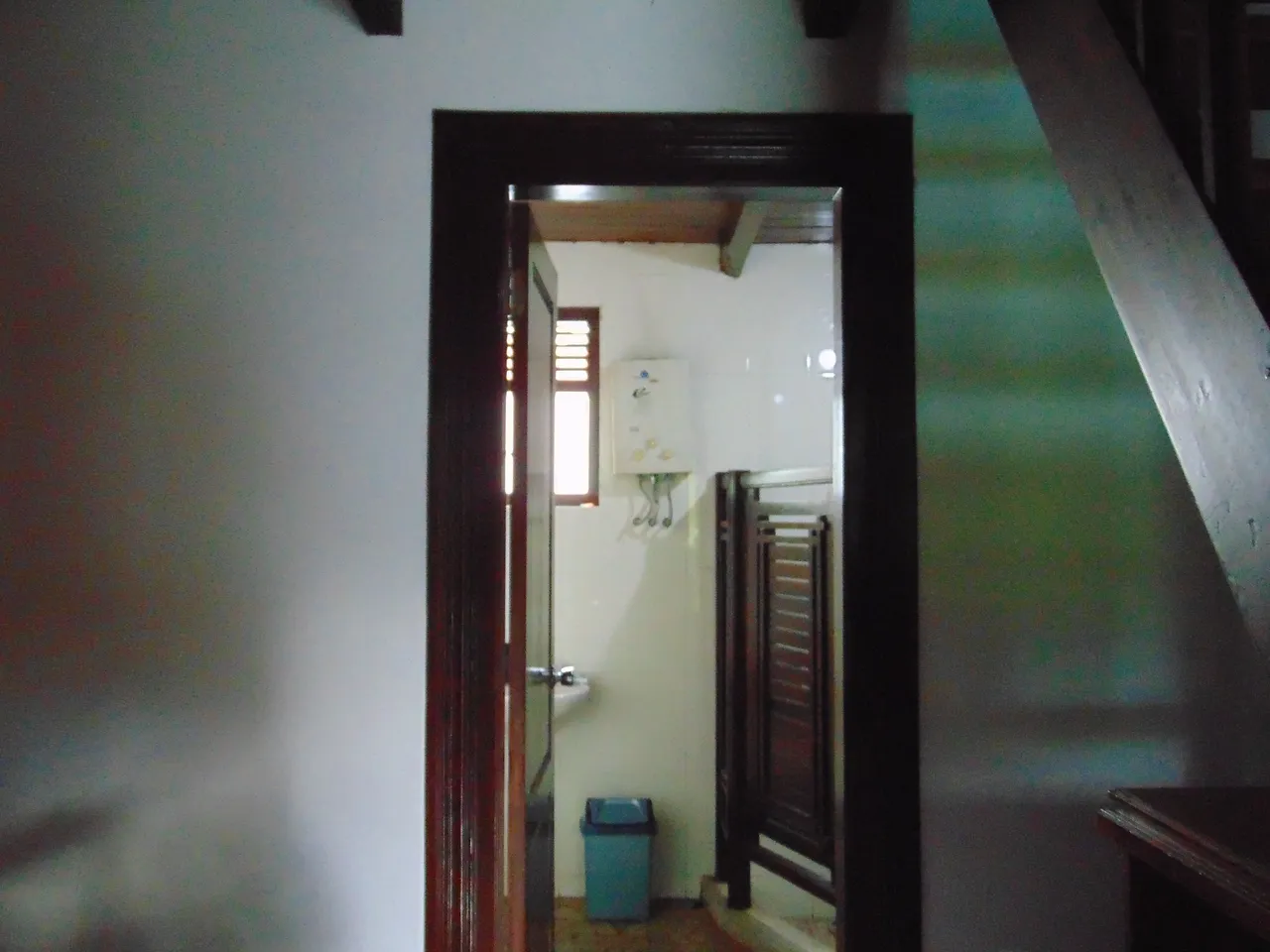
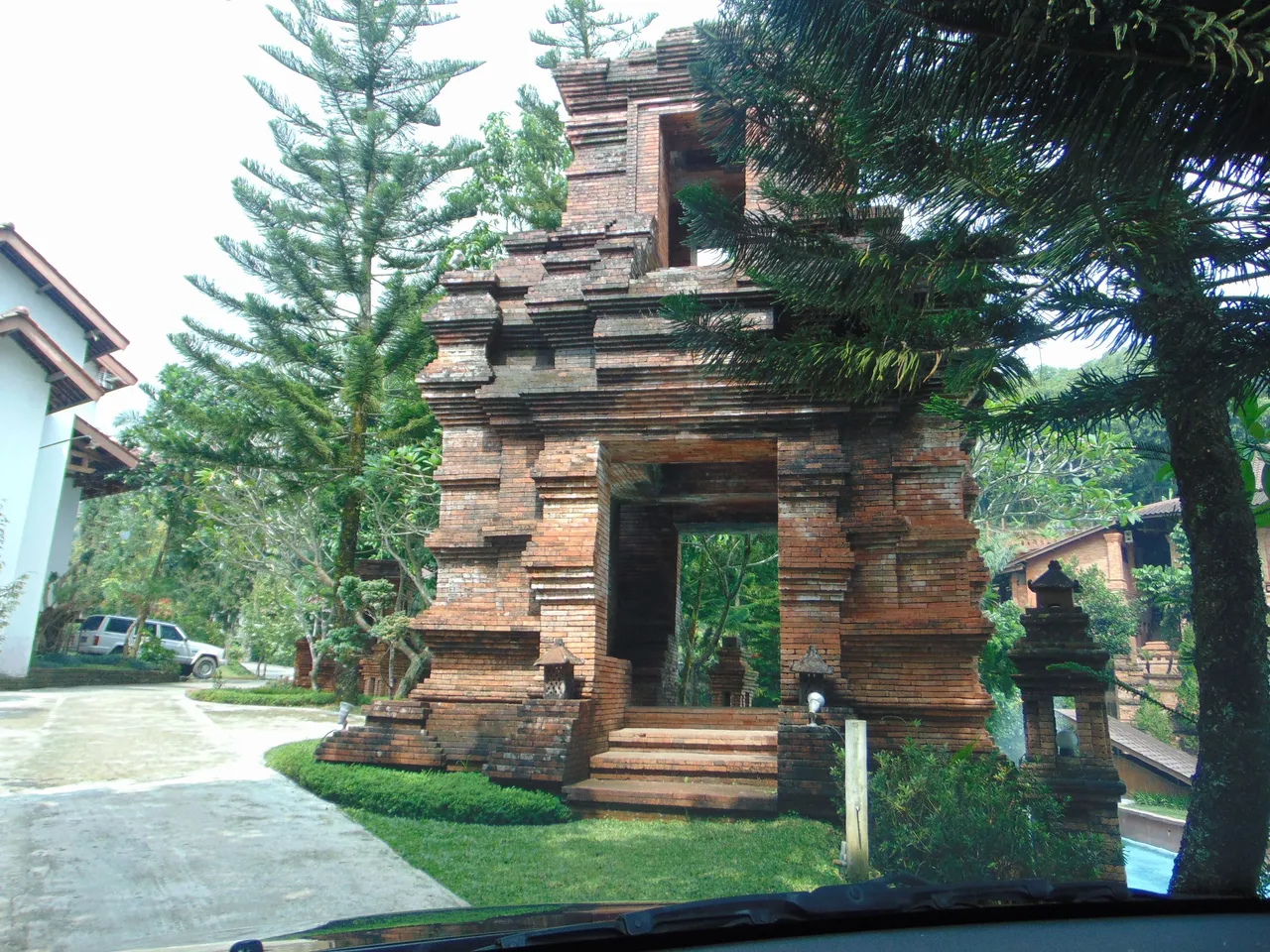
We really wanted to stay longer in that place but we had somewhere to go. I even talked to a lady who works as a server in the place. She told me about how the place was constructed and that the place was famous for meetings and gatherings for govt officials. The place was also bustling for more than 10 years and she’s also one of the longest staff in the place. She mentioned that actually the pool was quite a recent addition. She also told me about the temples nearby which are obviously made of stones (mountainous area) which to me looks like incan temples.
Whenever staying at places, I like talking to people because they always tell stories about the place, the surroundings, and local tips or themselves. This is often where I also gather extra information about the place.
I told the lady that I am most fascinated with the pool construction as it resembles an ancient gate , even a pool for the royals from east java. We eventually bid goodbye and she hoped that I would be coming back. I mean, I would love to because the place and the food are something that makes me want to go there. It’s also not that far via the tollway which was about a 4 hours journey in total.
I hope this post can answer some curiosities or even spark curiosity about this architecture style. This post went into another direction because I could cover so much more but I don't want to bore anyone with history tidbits. All in all, Javanese architecture roots into thousands of years even following the philosophy and ideals of ancient Javanese architecture.

Mac's Pinmapple Travel List


 | Mac is a jack of all trades. A typical introvert in love with literature, books, technology and philosophy. She is also so into nootropics, productivity, minimalist lifestyle, cybersecurity, and languages. Other than that, she is passionate about cooking and traveling. In her free time, she enjoys learning various things. If you like her content, don't hesitate to upvote, leave a comment or a feedback. A re-blog is also appreciated. |